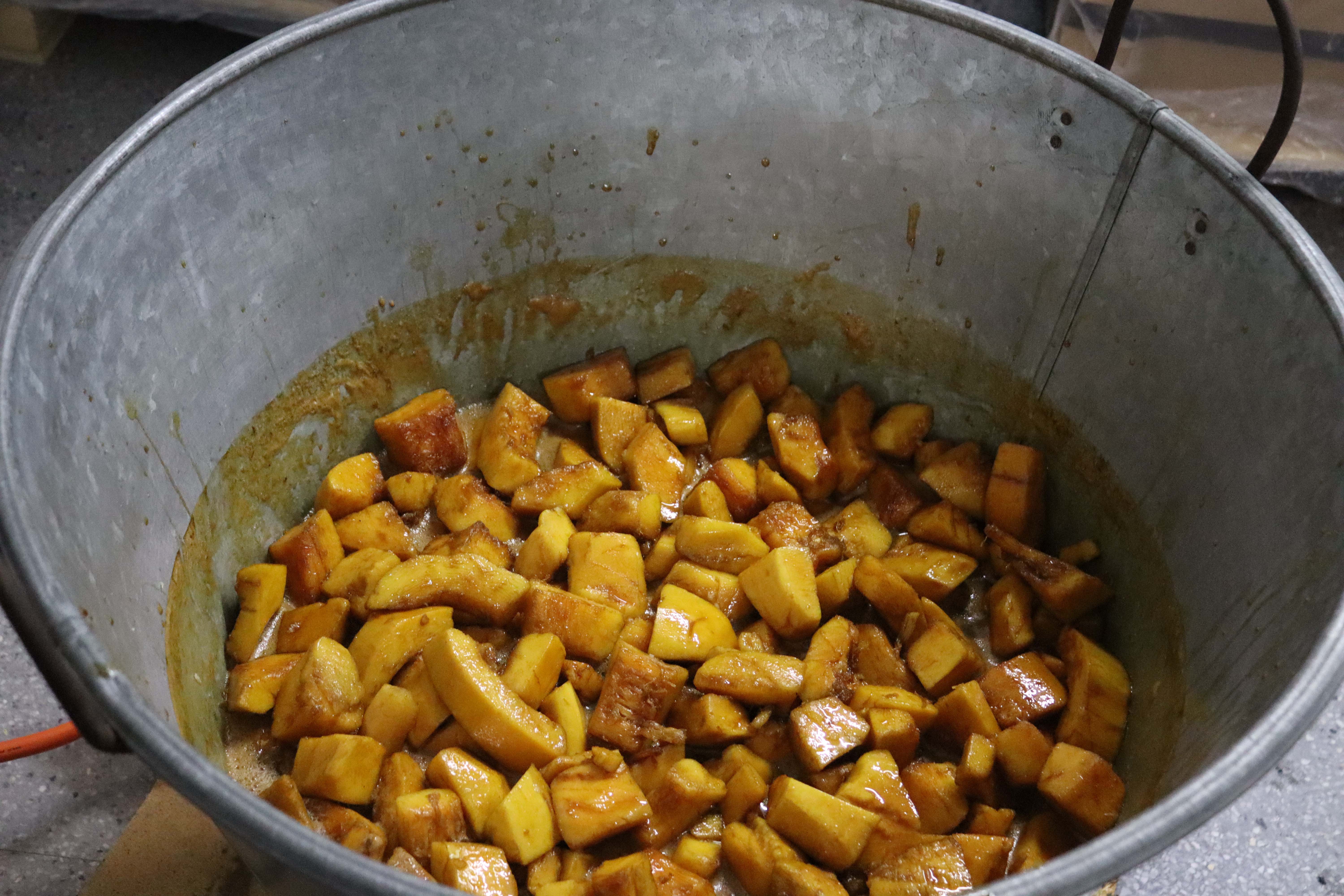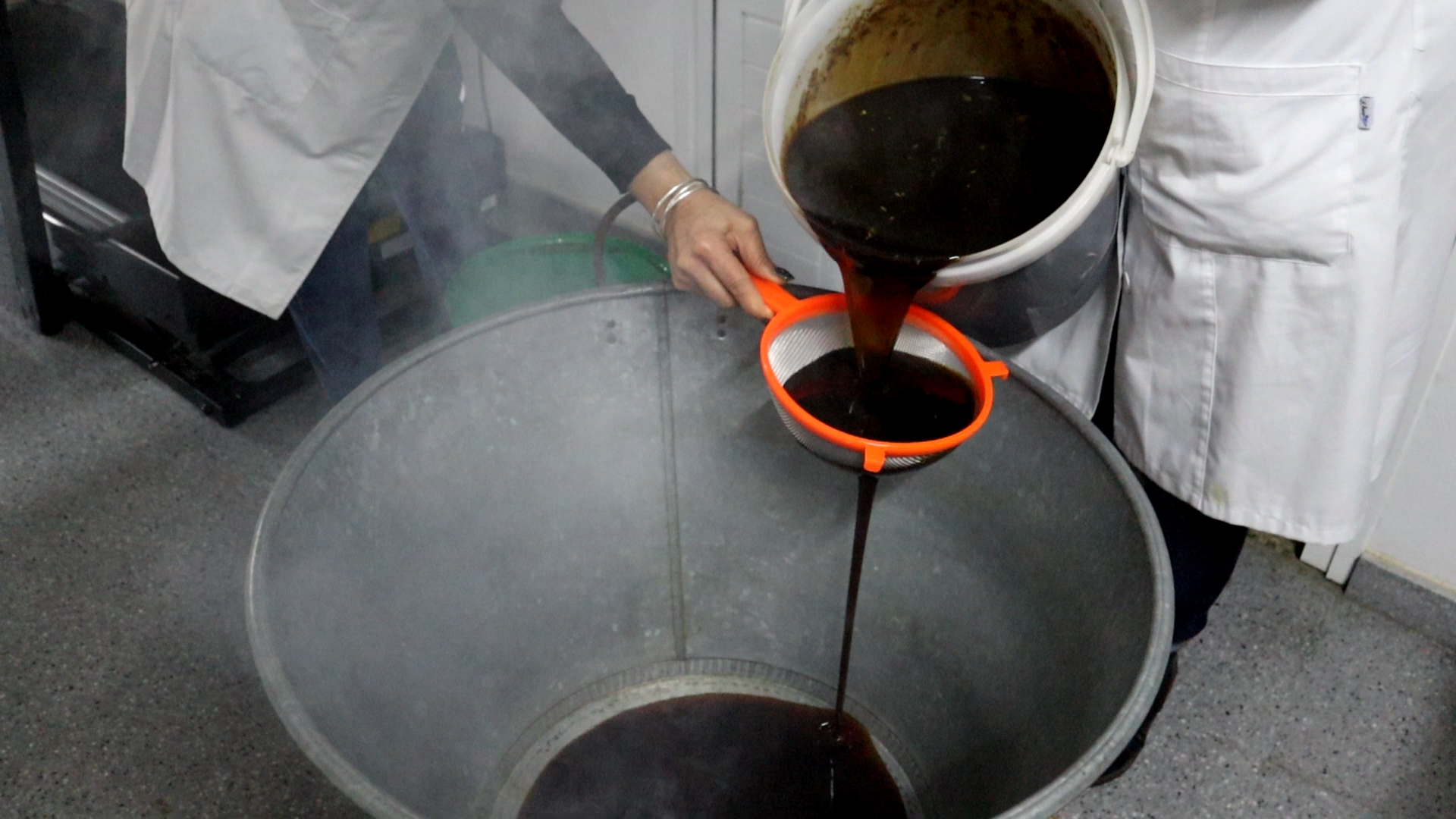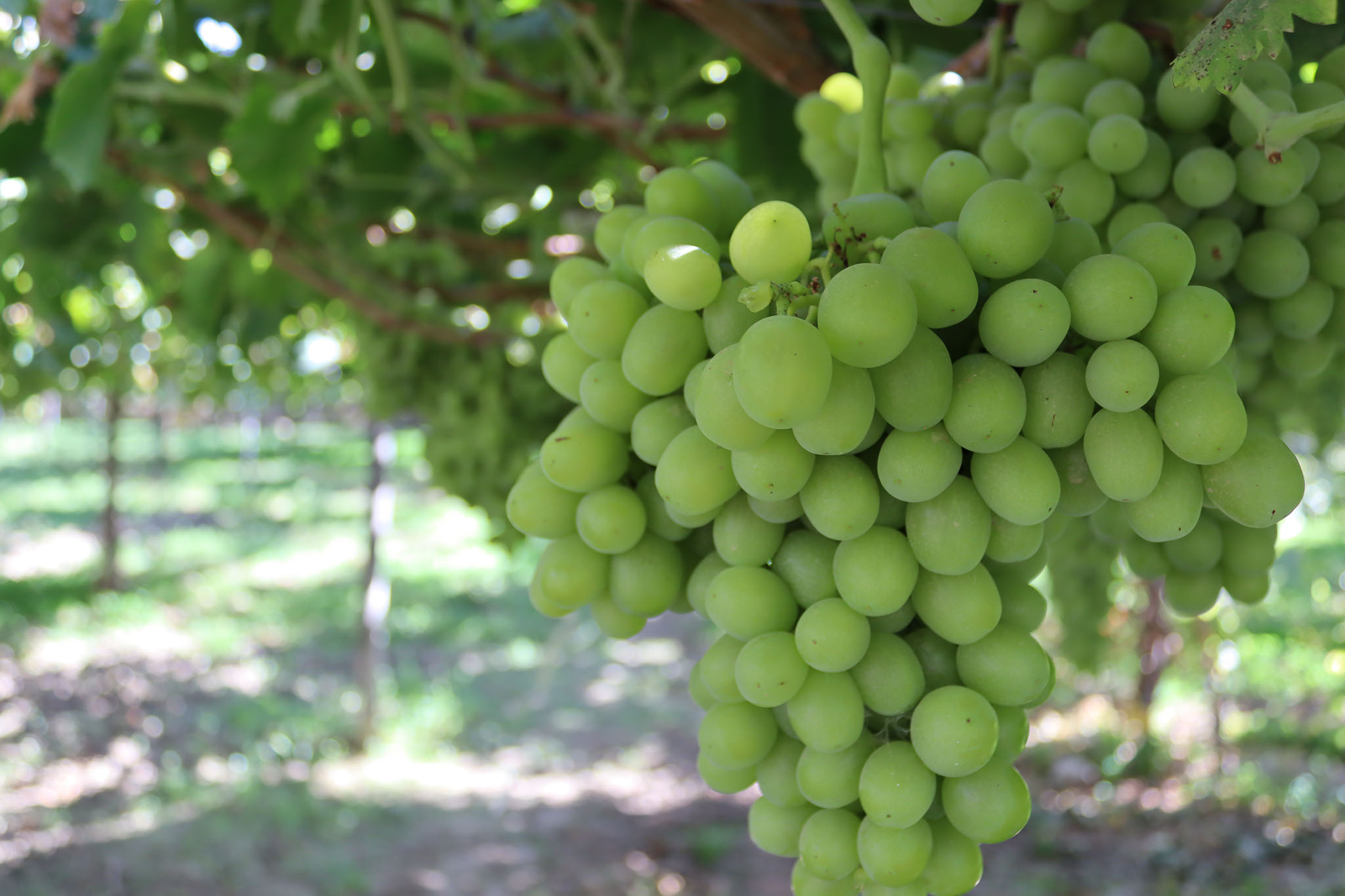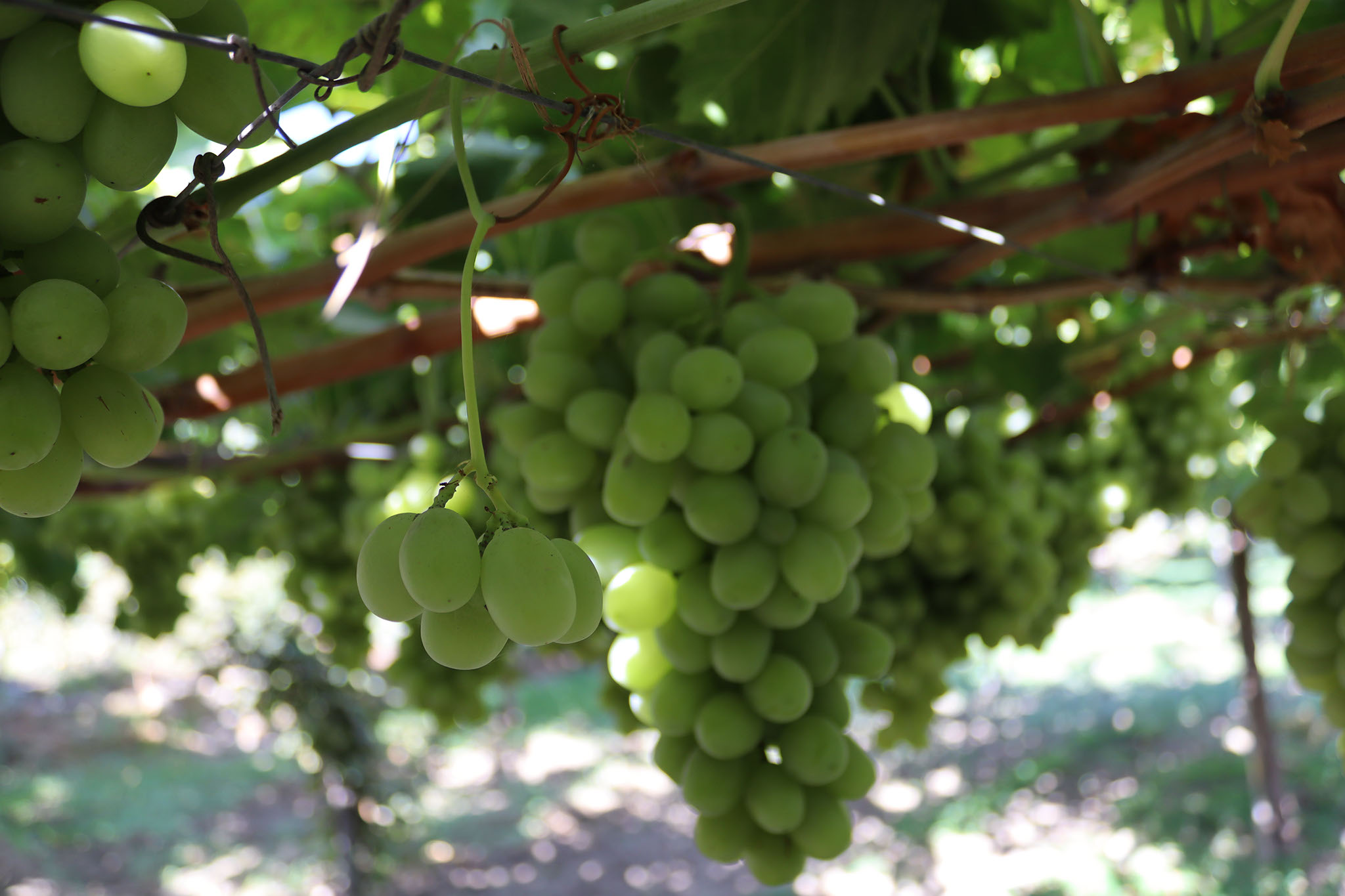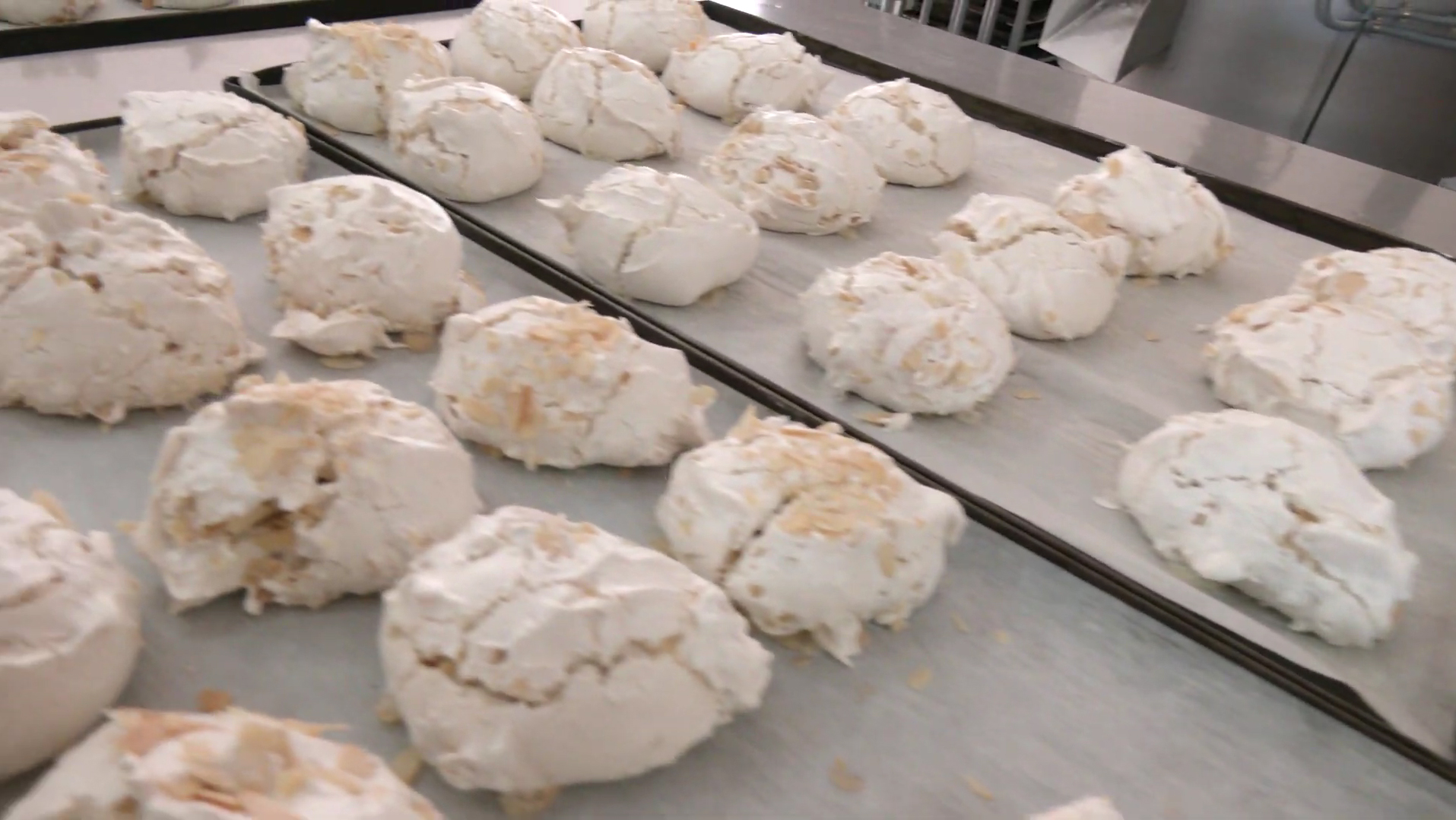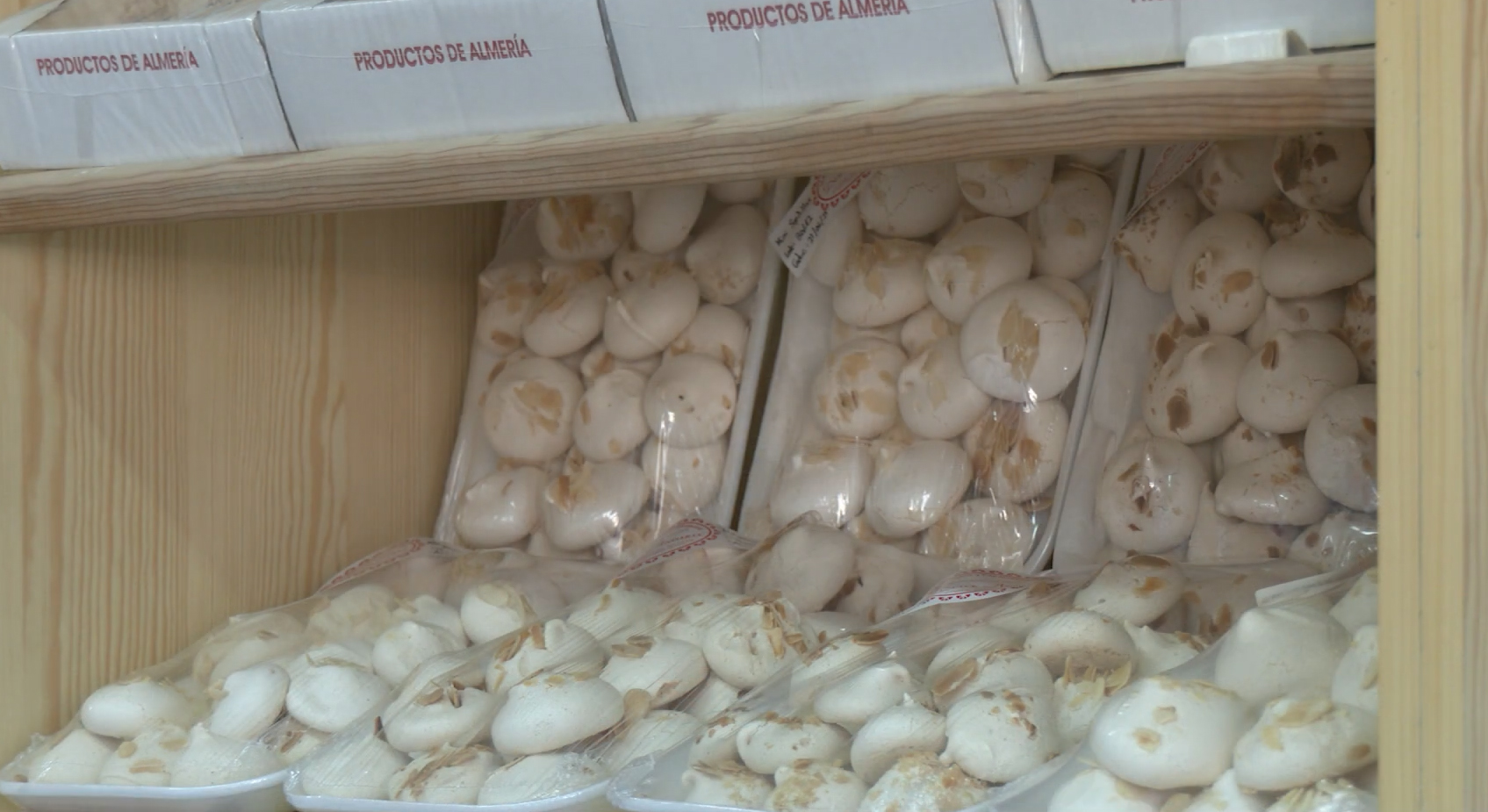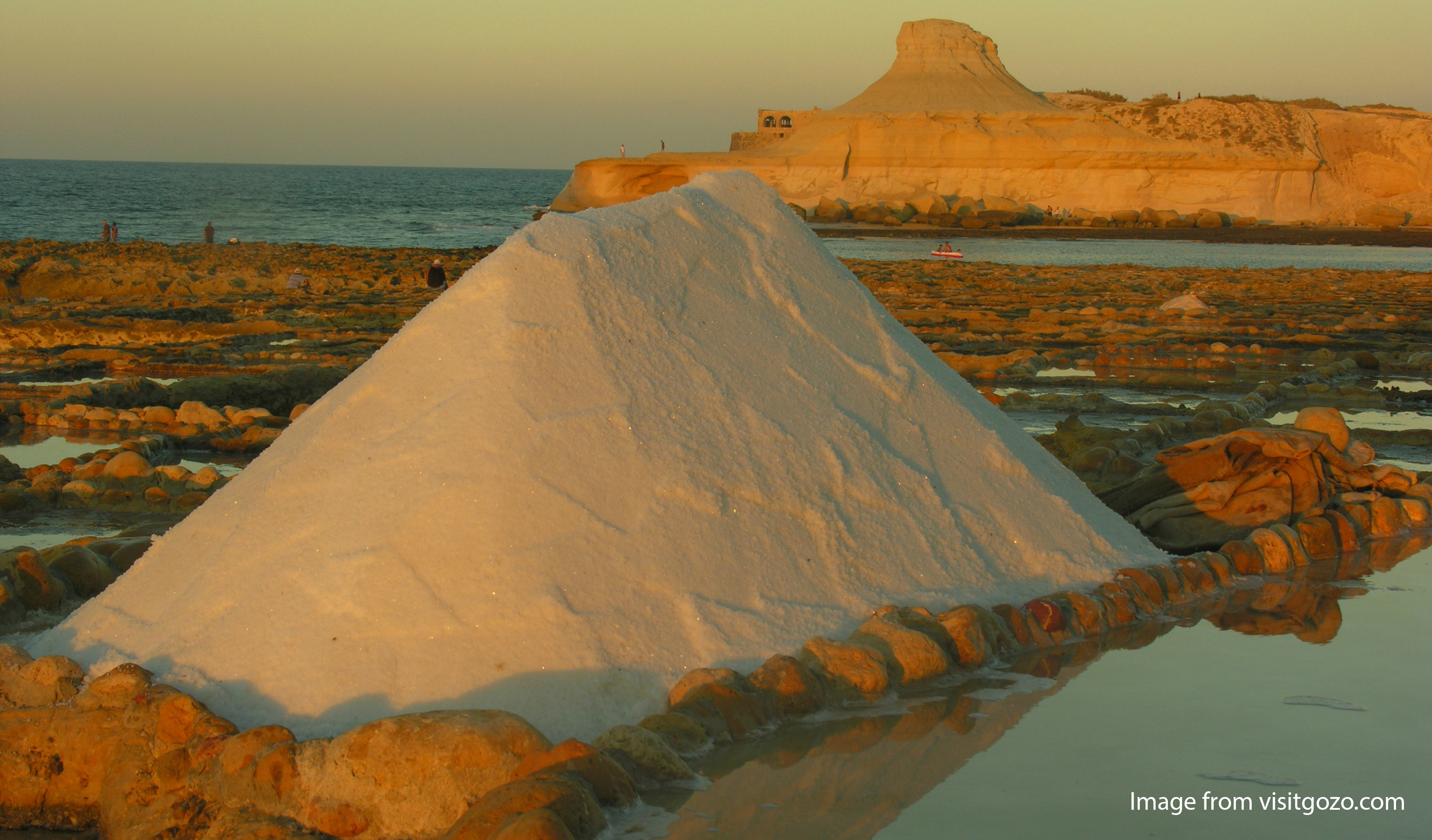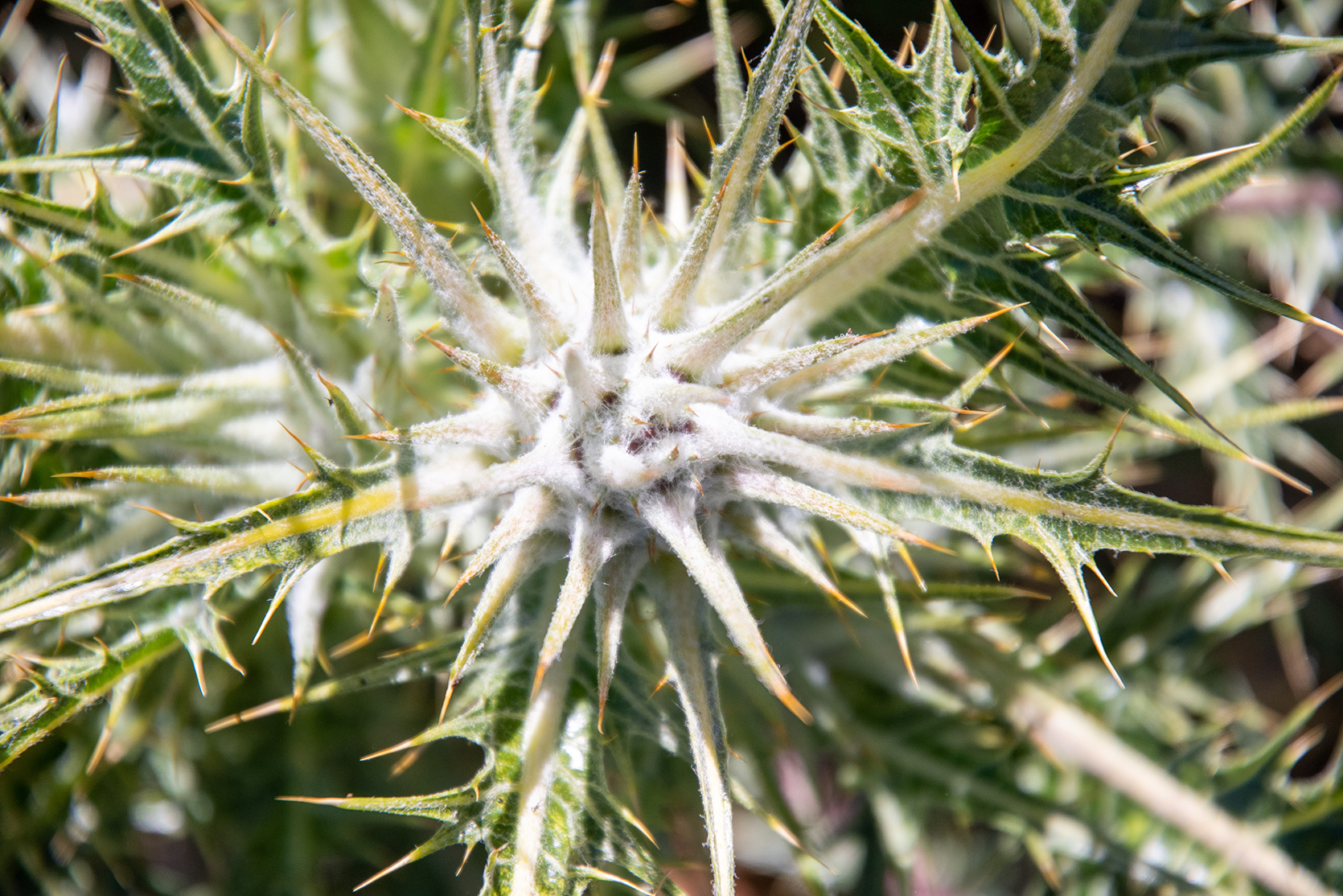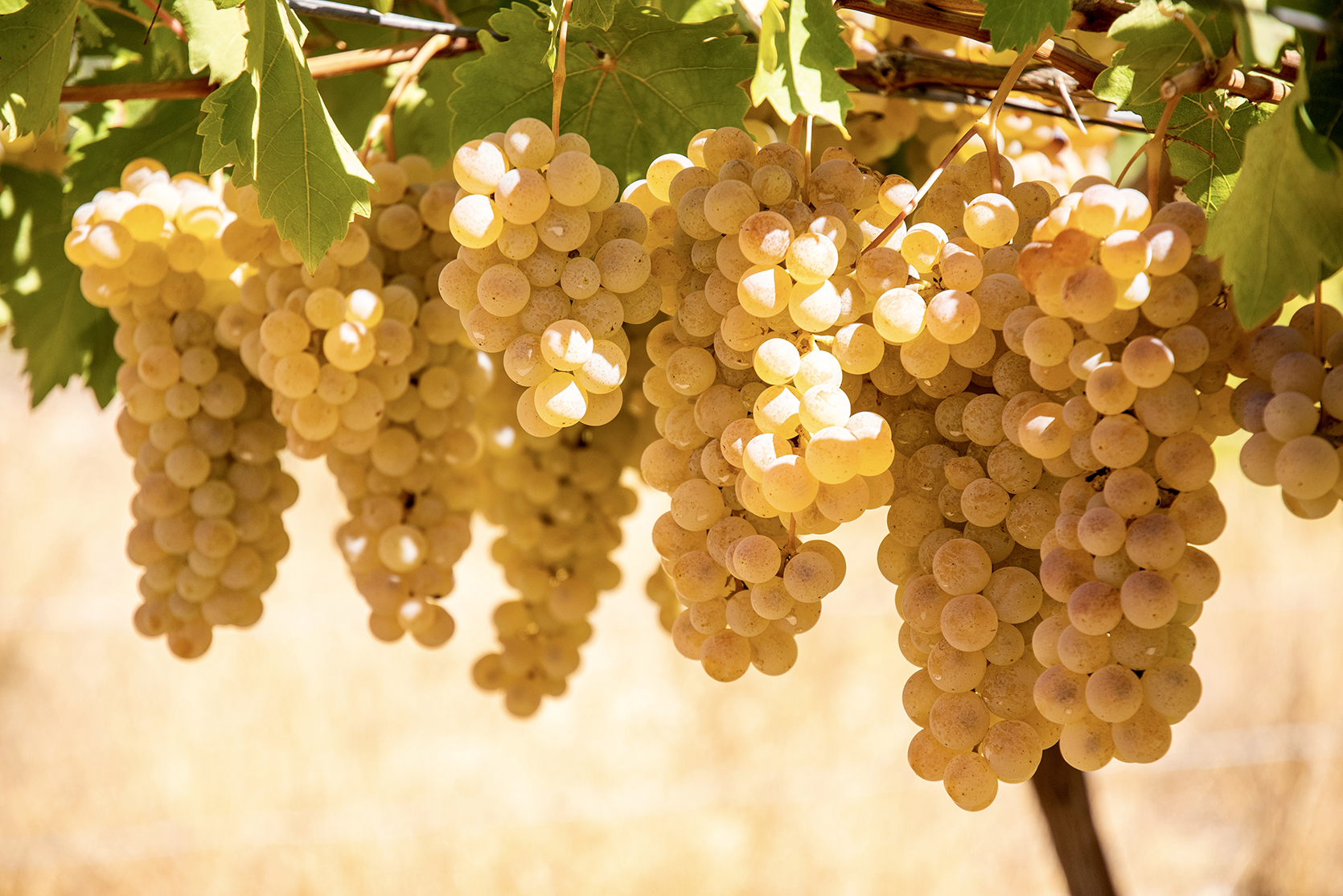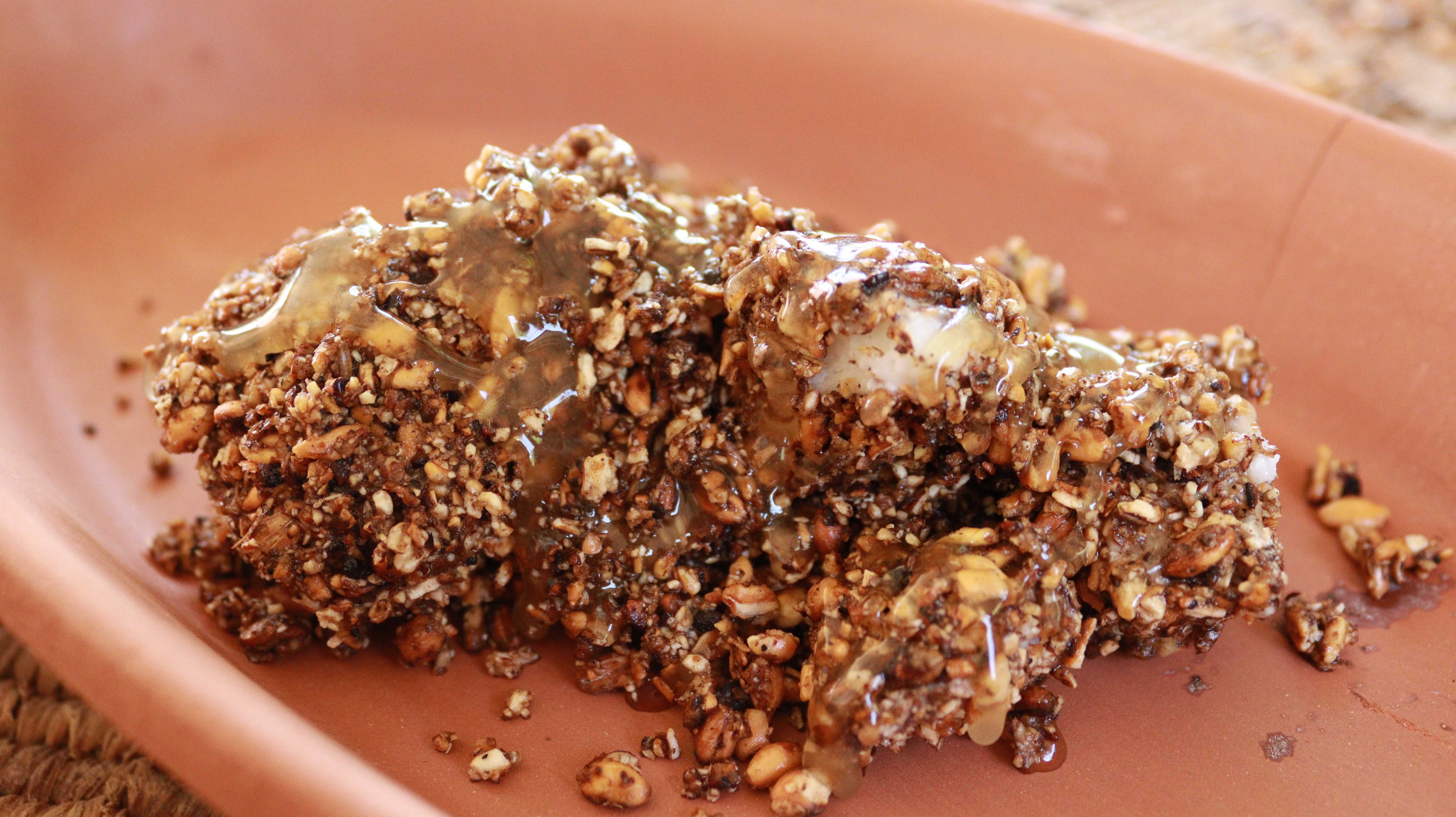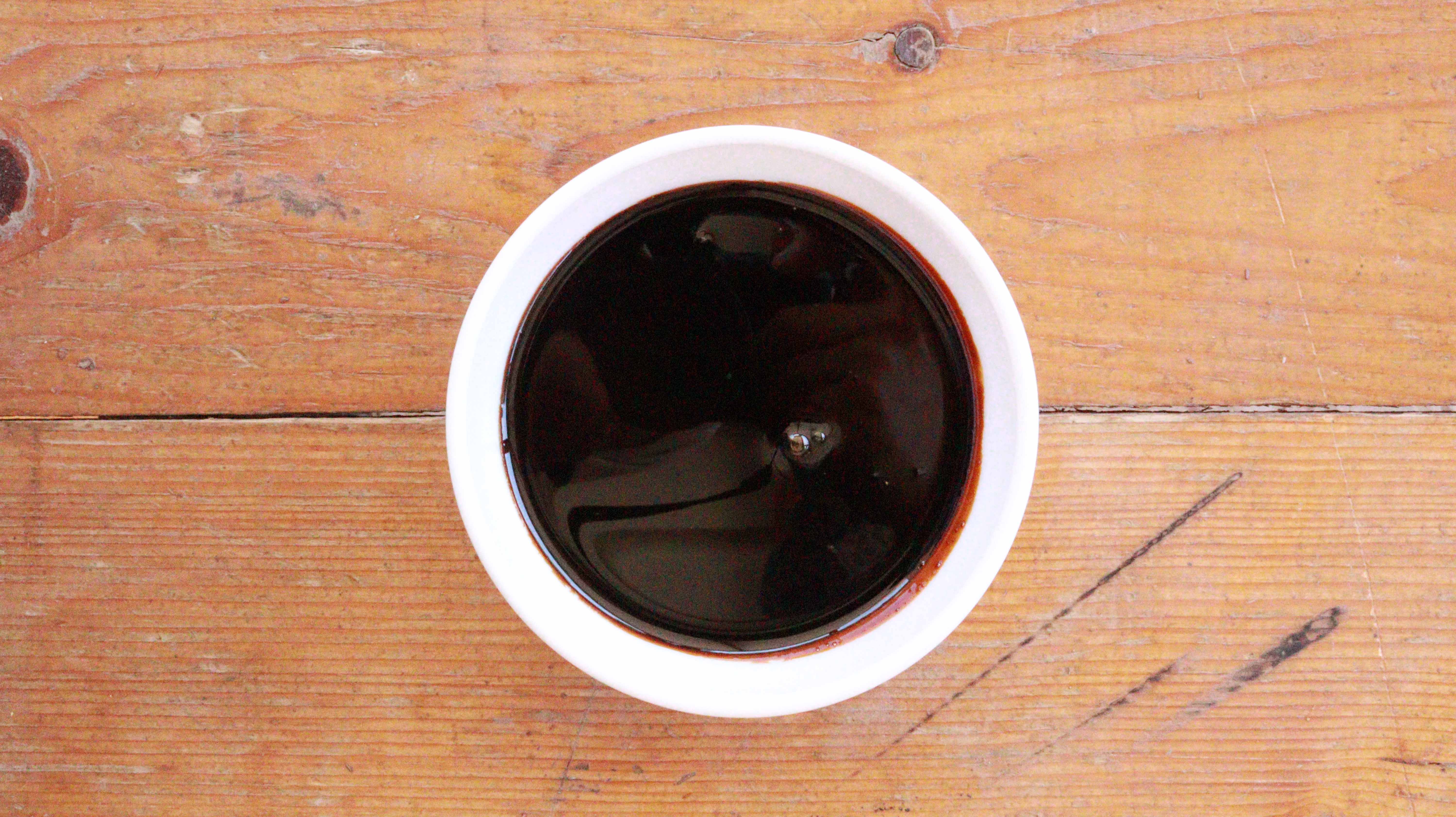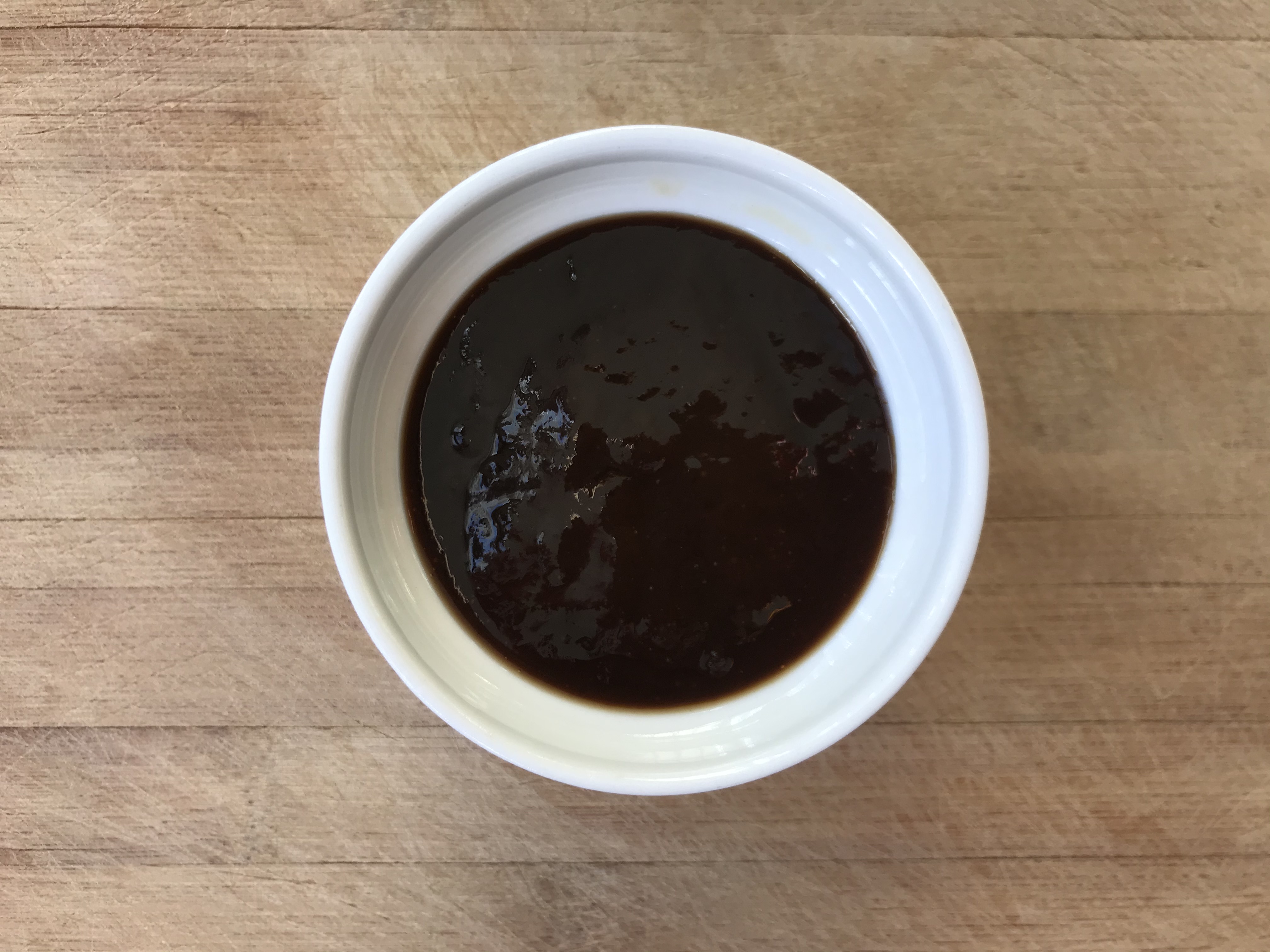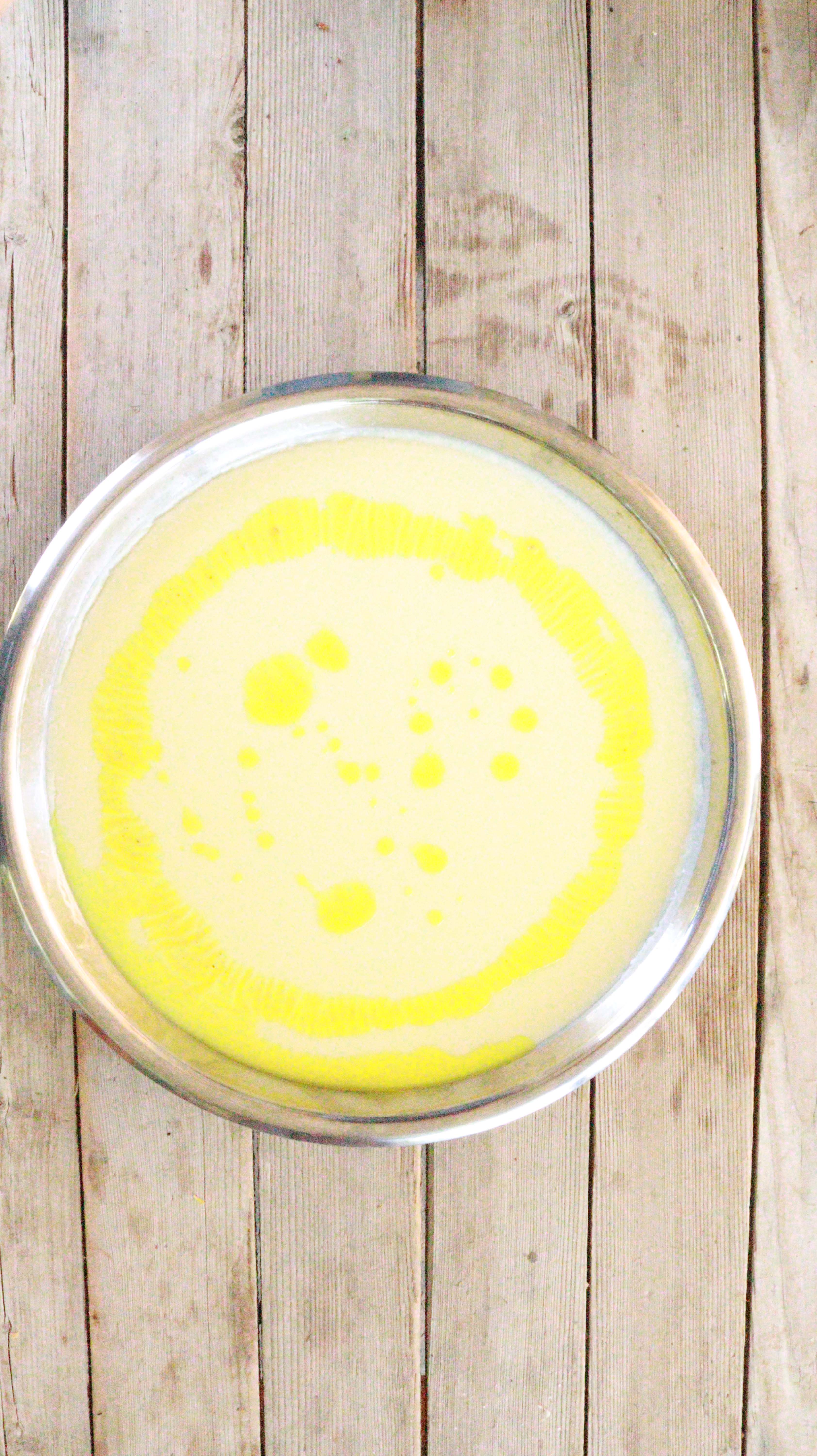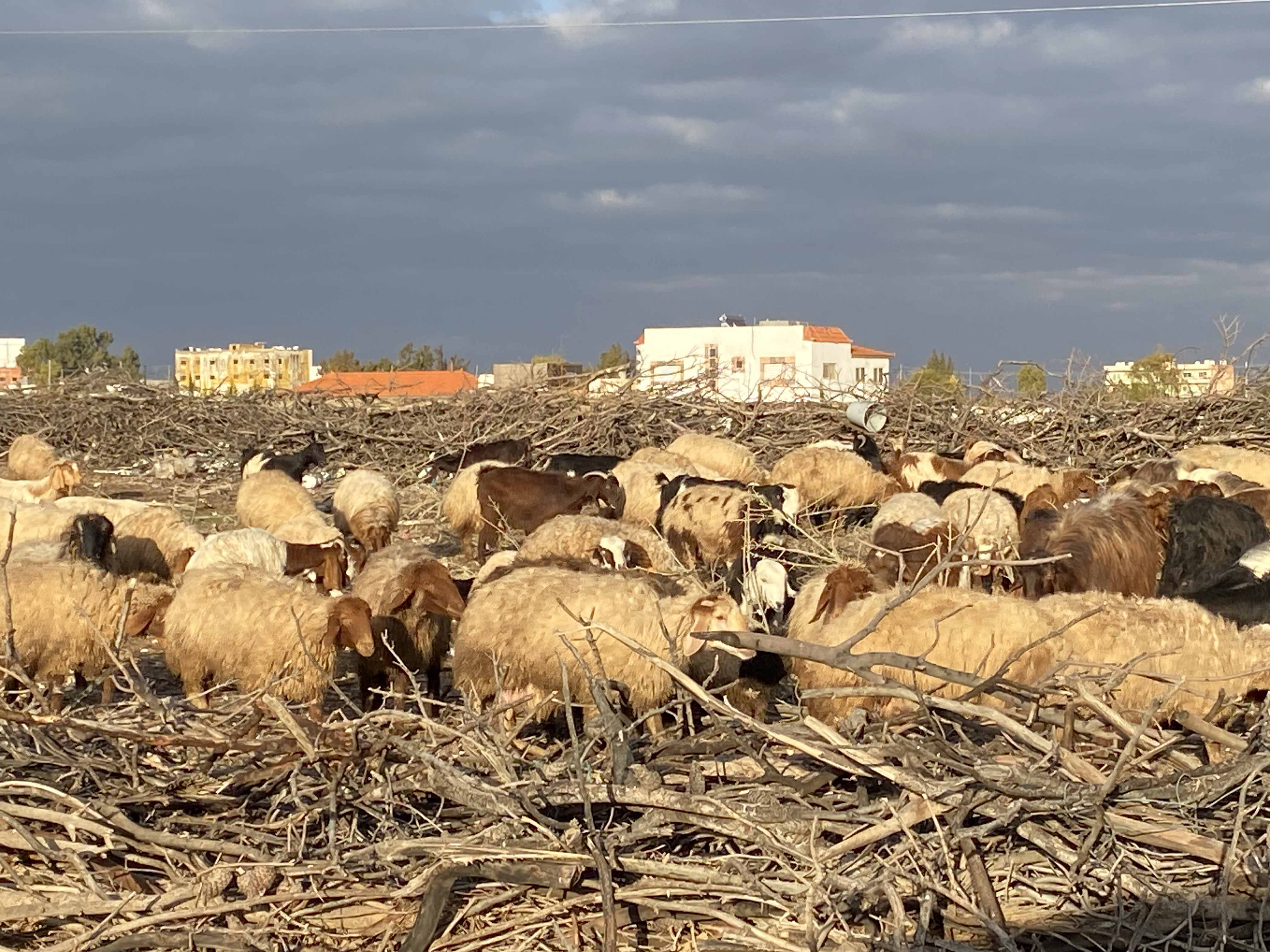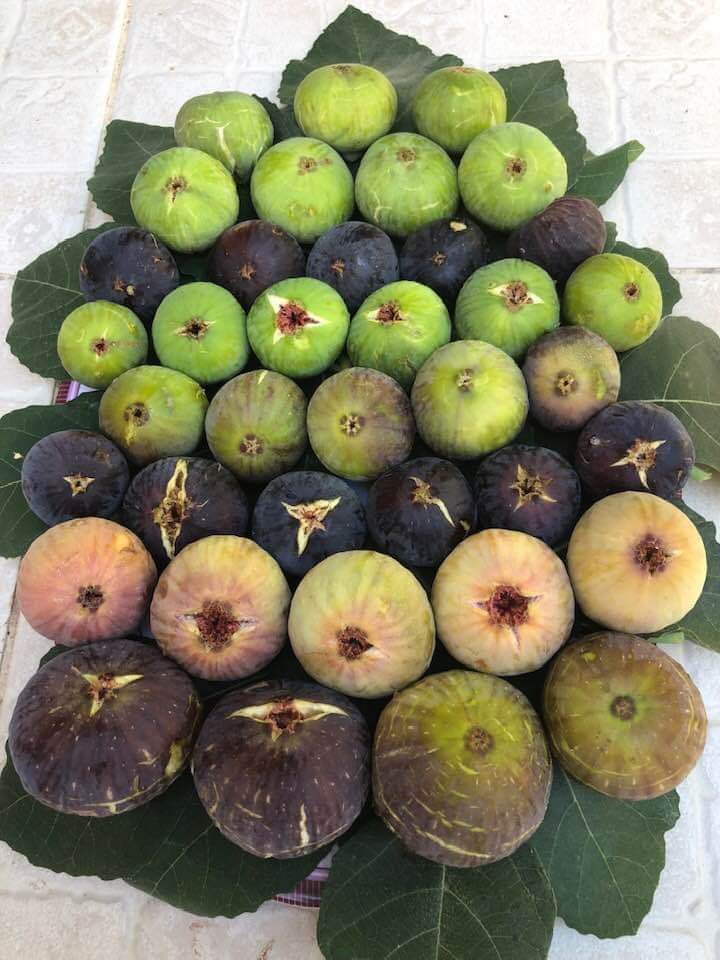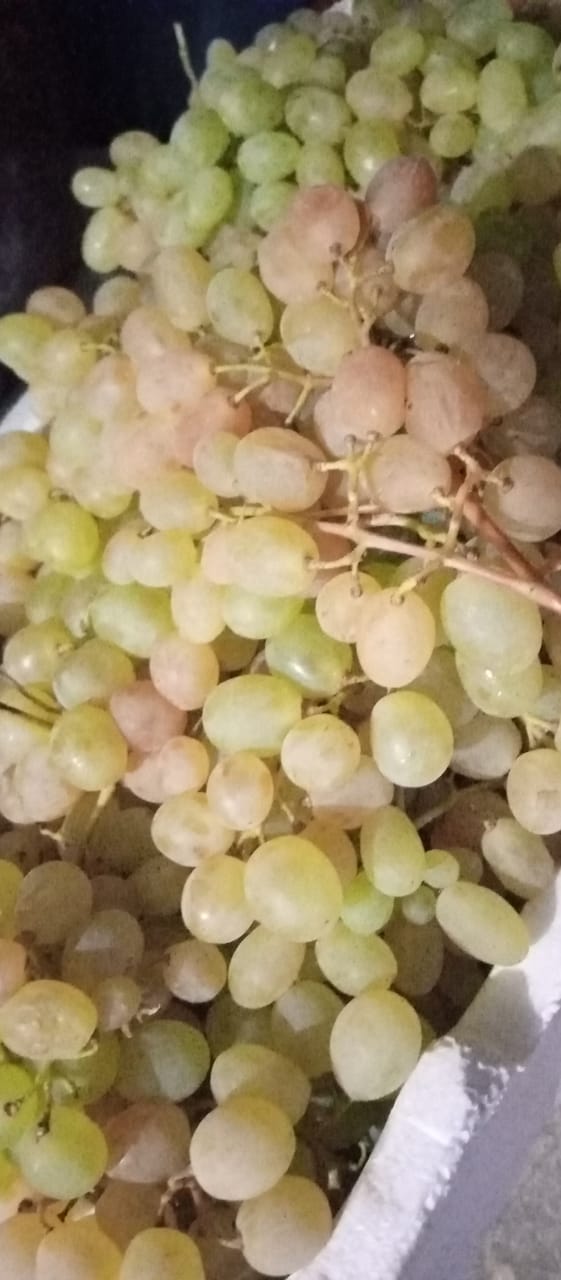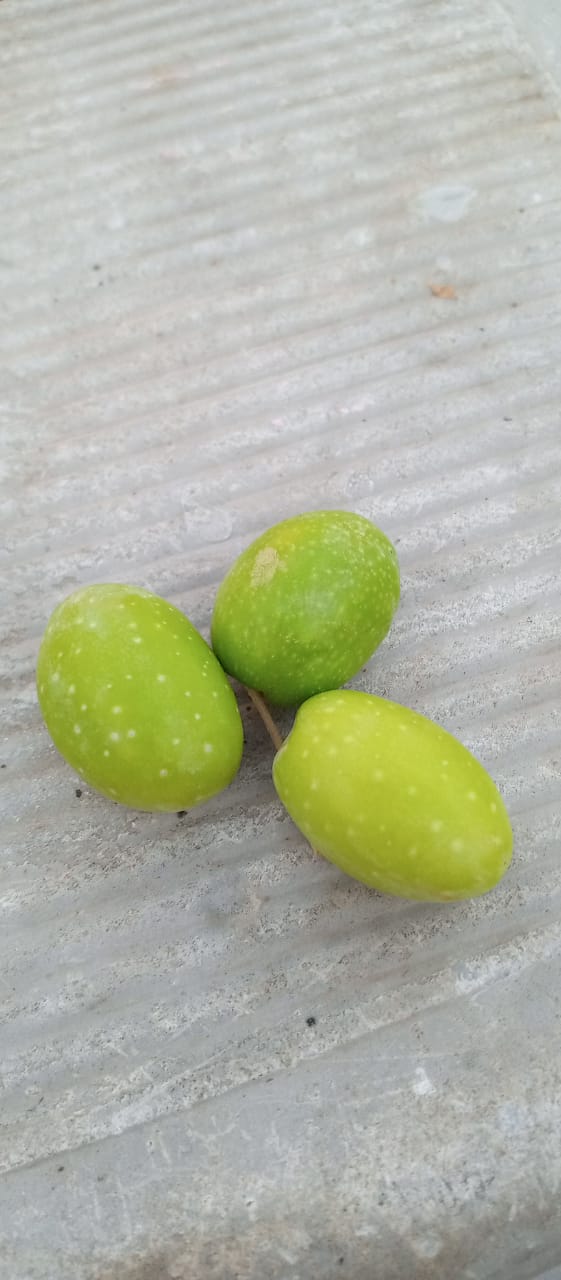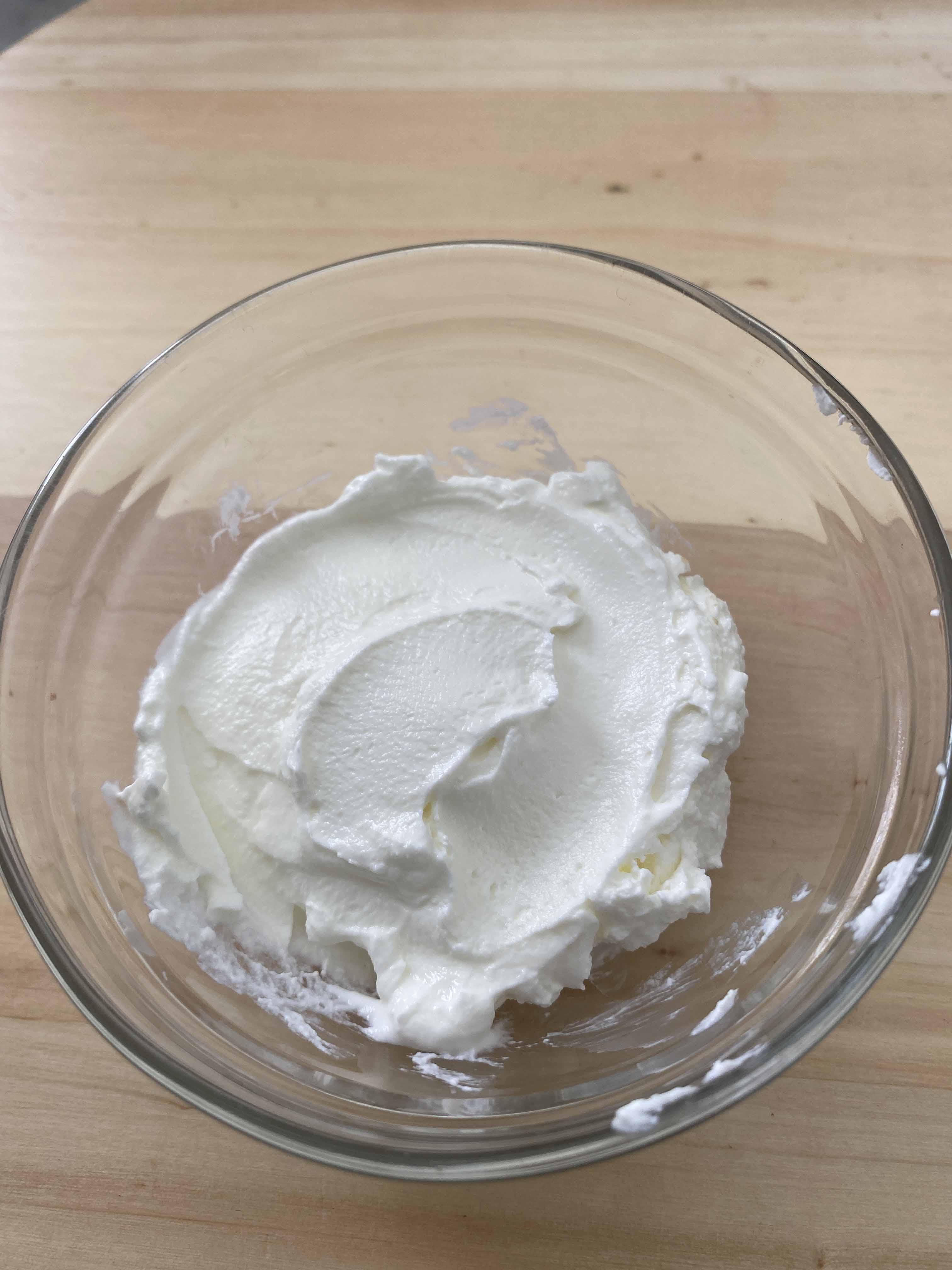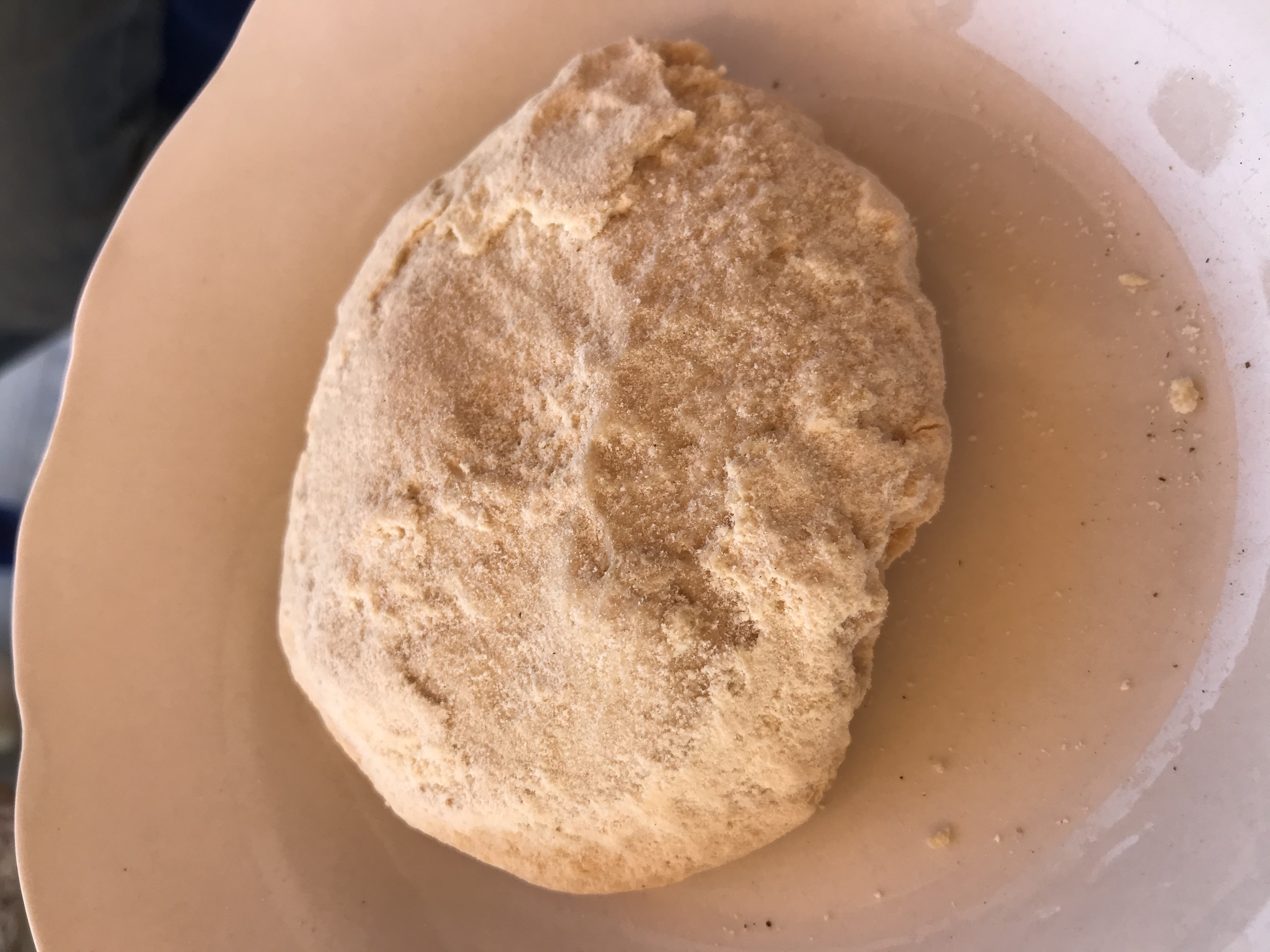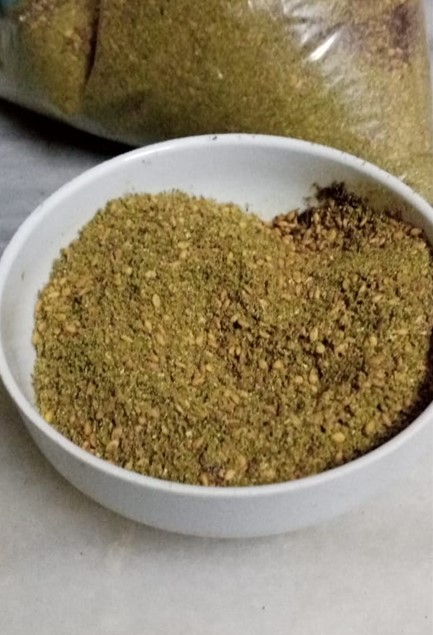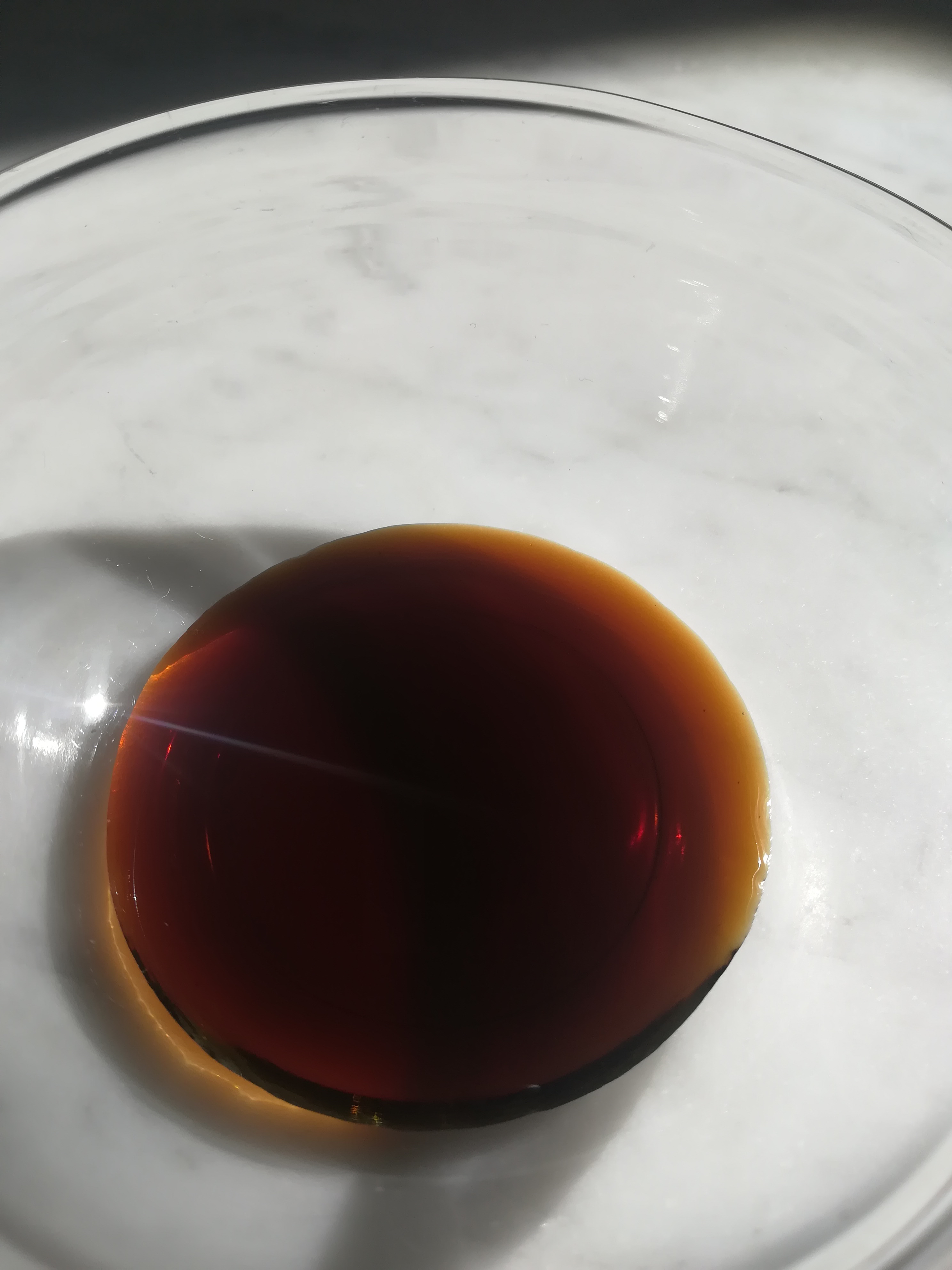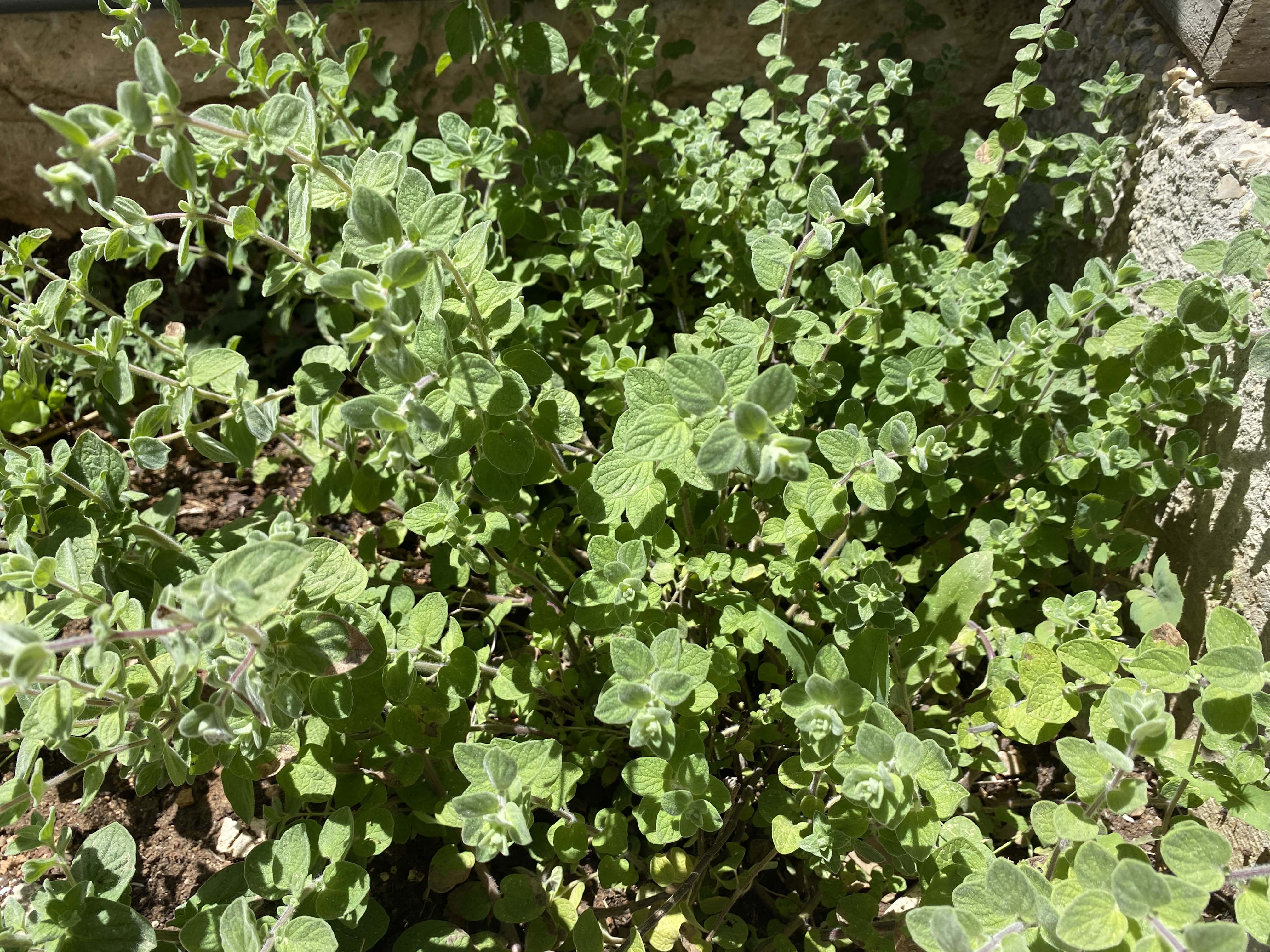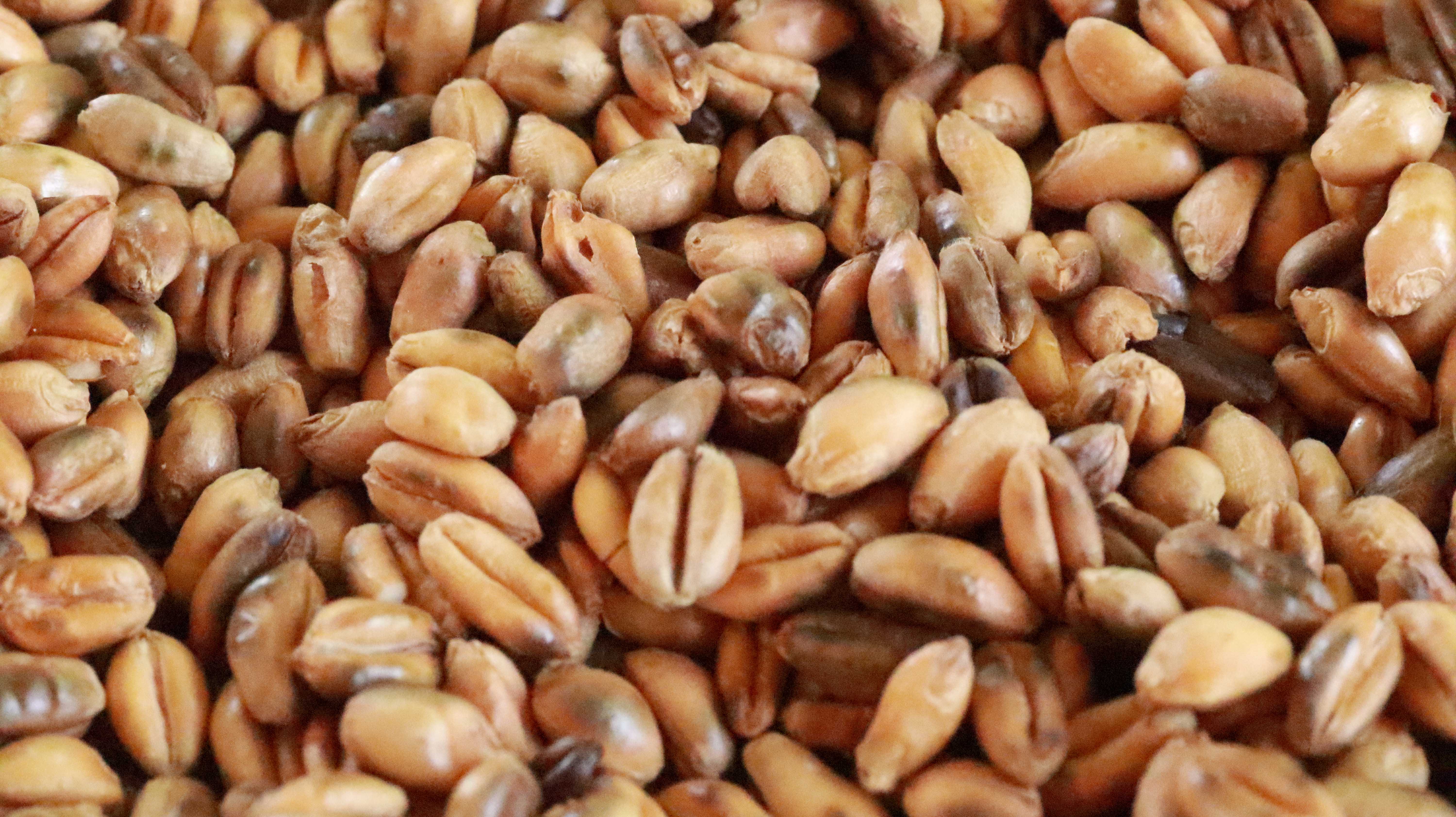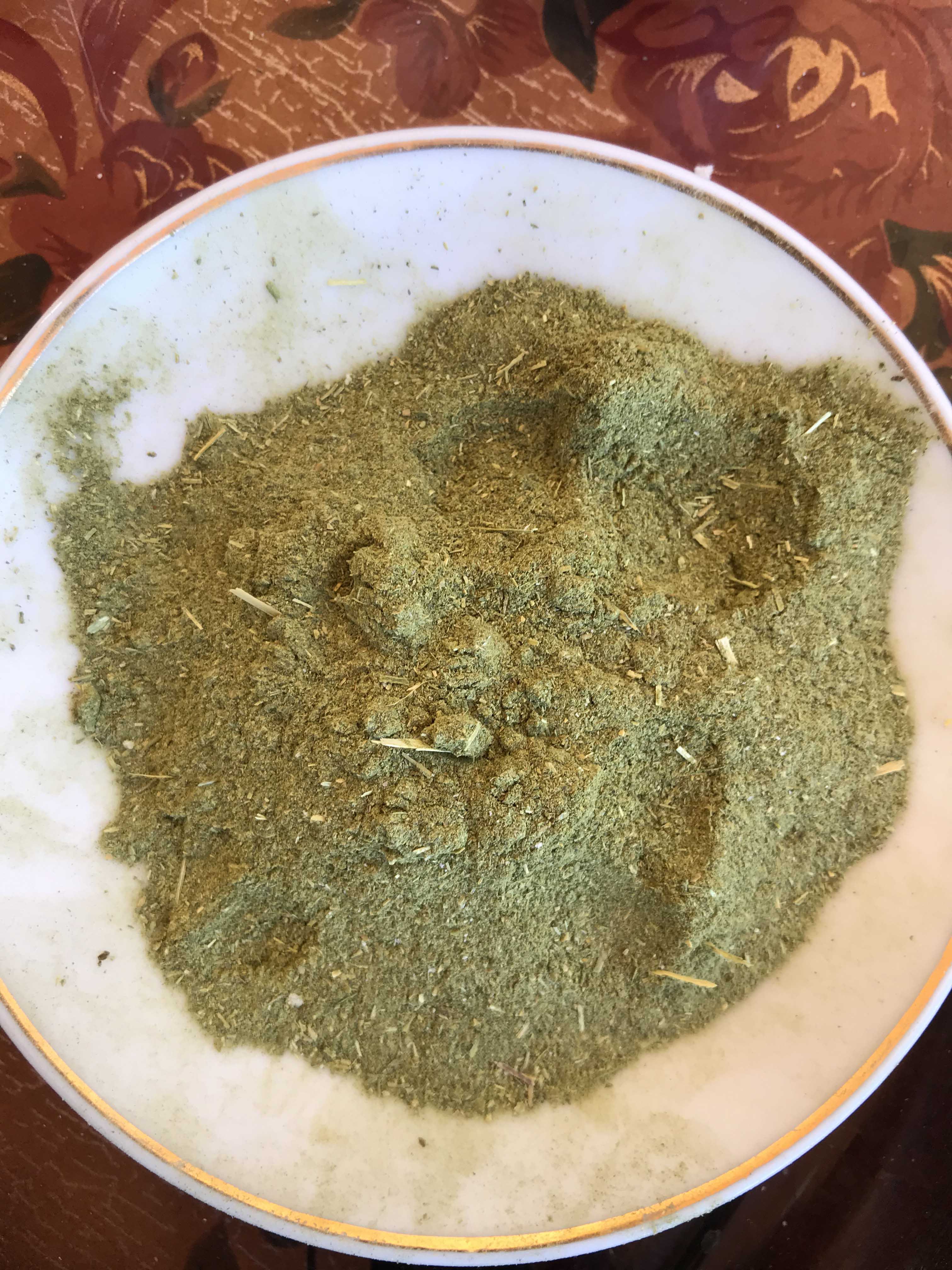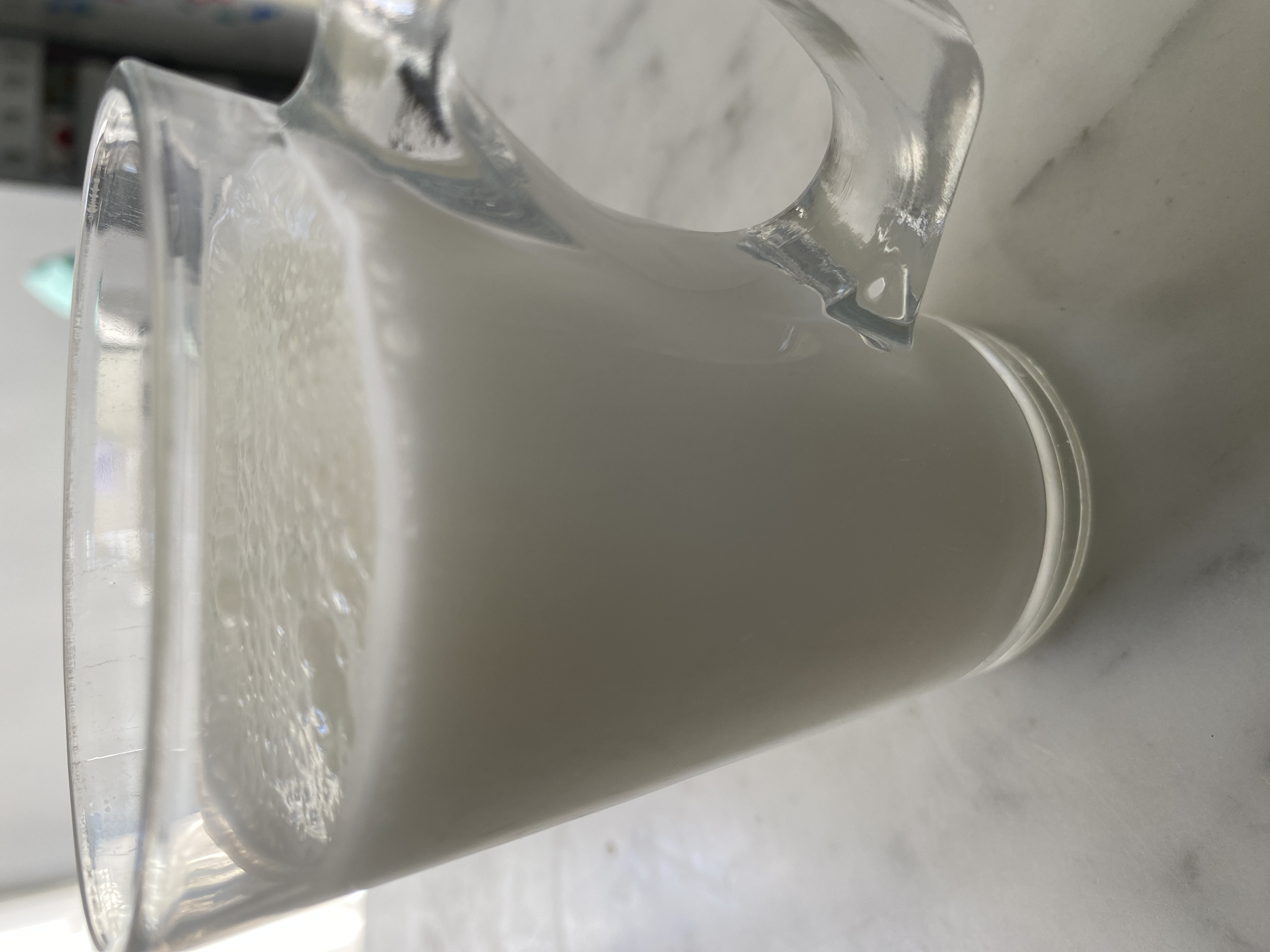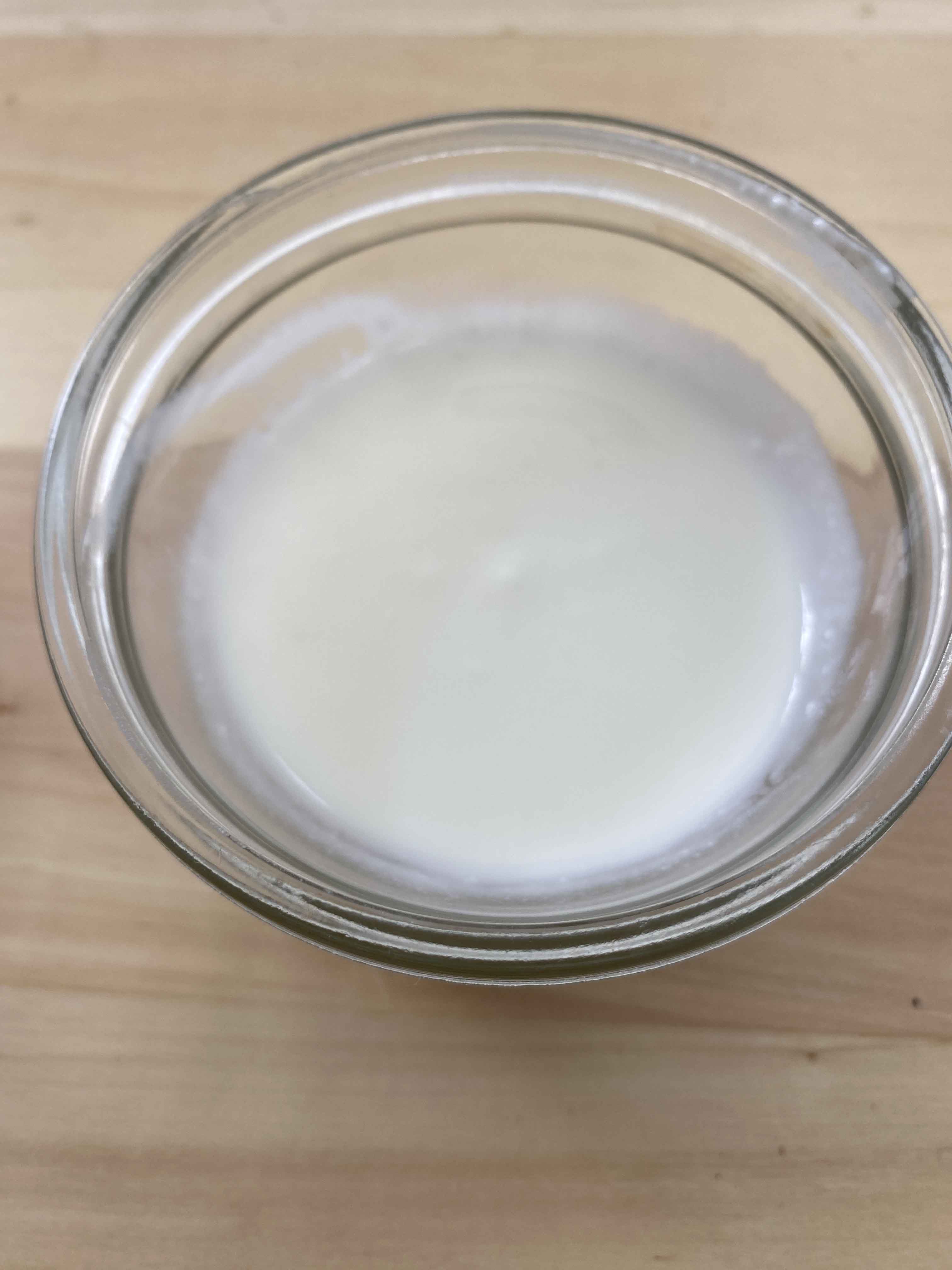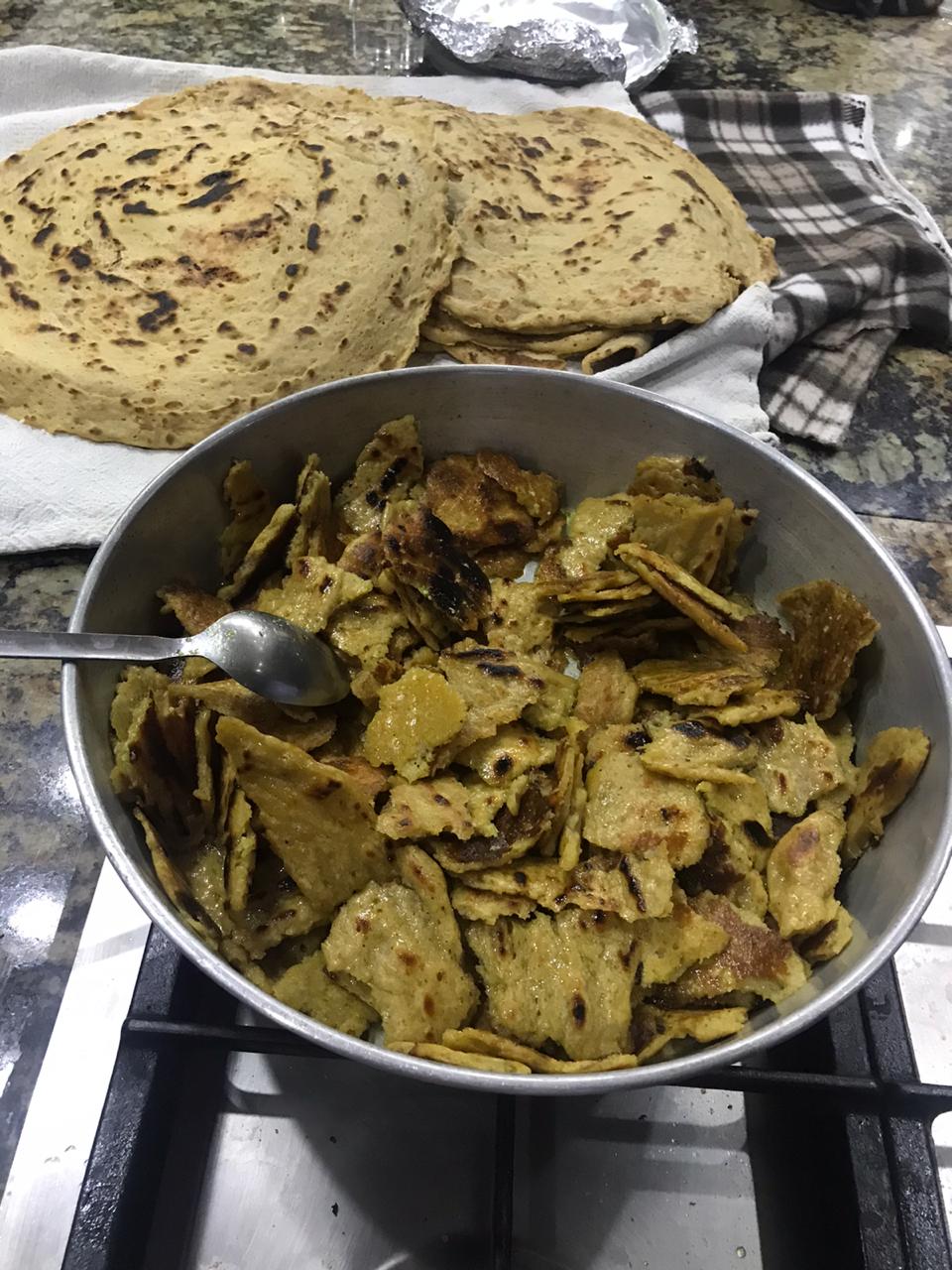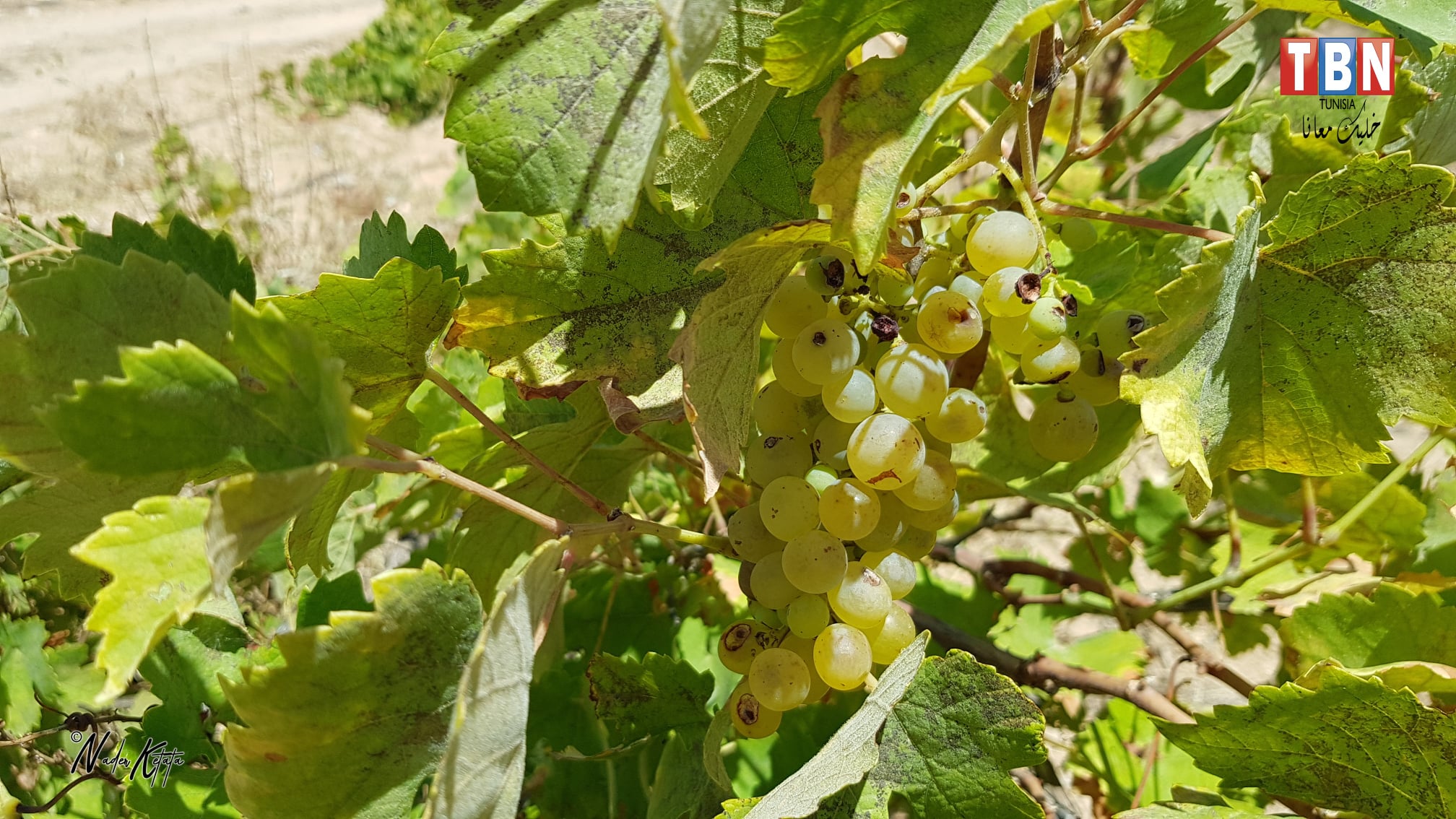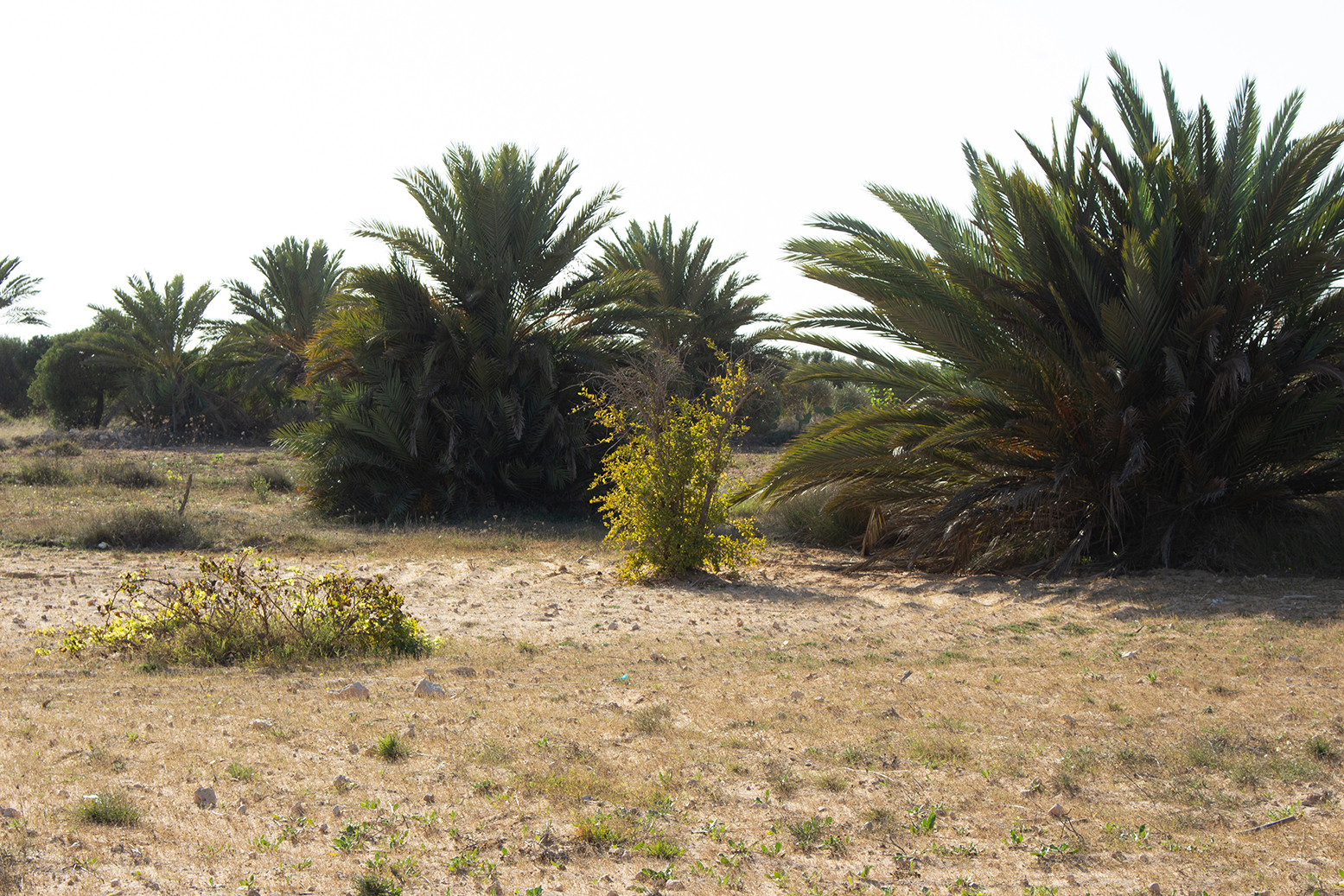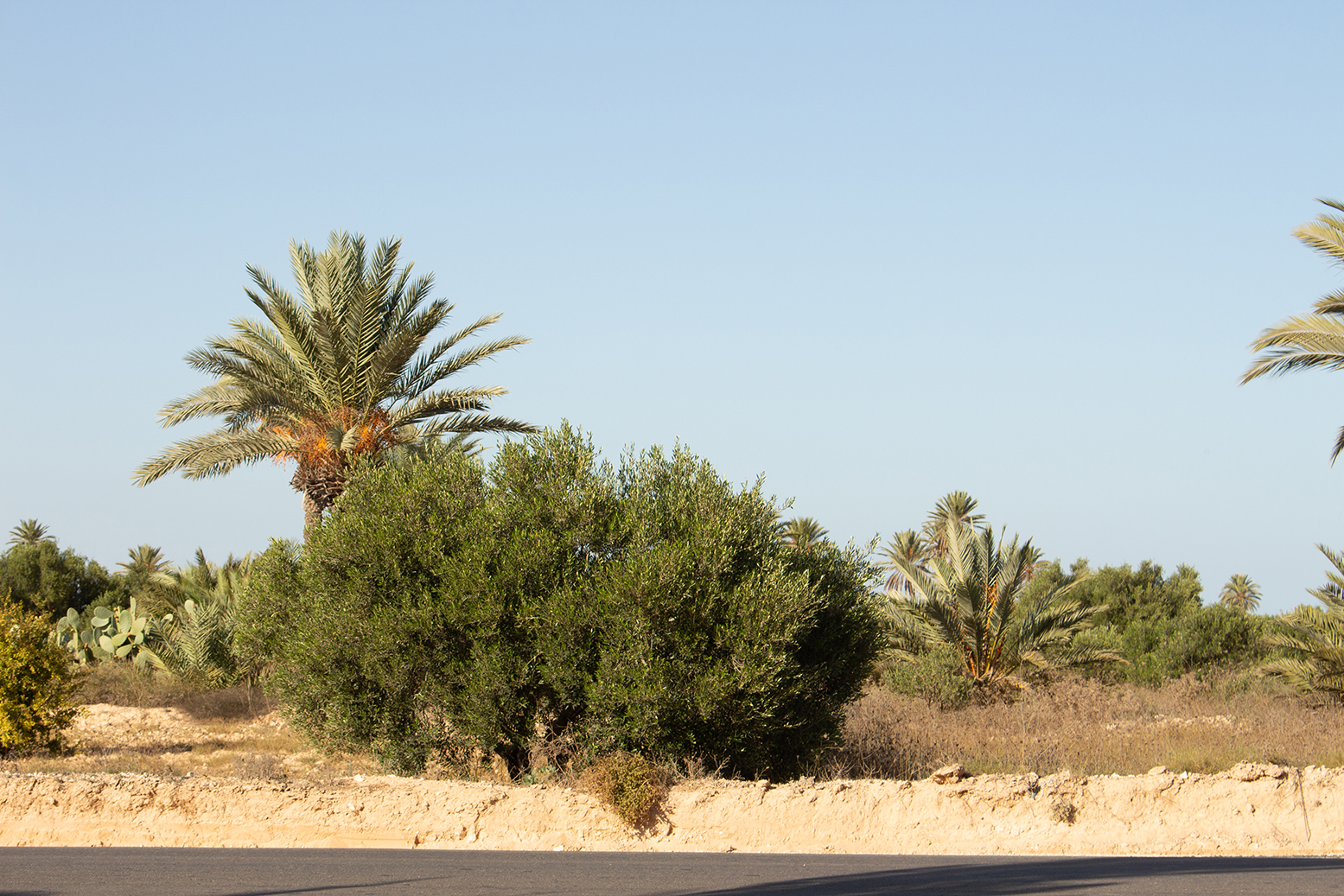- Product Name: Baseesah
SUMMARY: The name Baseesah refers to many traditional sweet dishes in Jordan, Palestine, Syria and Arab countries of North Africa, however the ingredients and processes differ from one country to another.
Baseesah is traditionally made during the wheat harvest and cold winter days. The traditional basic ingredients are Qalyet Qameh “roasted wheat”, whole wheat flour, Samnah Baladieh/local ghee and used to be sweetened with date molasses or honey, these days it is more common to use sugar as sweetener. Sometimes olive oil or Baladi butter is used instead of the Samnah according to what is available in the household at the time. It has many variations around the area, but the main ingredients remain the same.
Qalyet Qameh, the product that this dessert is based on, is whole wheat grain that is toasted and eaten as a snack by its own or mixed with roasted Butum “terebinth” and Hab Qraish “Aleppo Pine”. It used to be consumed during winter months when the family and neighbours gather around the fire, enjoying it as a winter snack with tea and coffee. However, Qalyet Qameh is now a rare snack, only consumed by the people who still grow wheat or have access to whole wheat.
it is women who usually make Baseesah and only make it for their own household consumption. Some grow their own wheat and some buy their wheat from others.
The process starts by making the roasted wheat, wherein the wheat is toasted in the traditional iron coffee roaster (a small shallow pan with a long handle) called Mehmas, held over wood fire in a pit or Kannon fire (portable fireplace). It can also be roasted in Saj (which is a thin, circular iron dish that resembles an upside-down wok, supported over the fire by three or four stones.) The roasting is complete once the grains reach a red/brownish colour. Afterwards, local ghee/ Samneh Baldieh is heated and added with some whole-wheat flour and sugar, mixed and placed in a pot called Qedreh to serve.
This type of sweets encompasses the food heritage of the area of intervention, as it is based on the local population’s main available resources; roasted wheat and whole-wheat flour, the local butter and ghee that are produced from their sheep and goat milk, infused with a mixture of wild herbs’ flowers and plants, to the olive oil pressed from their ancient trees. This dessert captures the food identity and heritage of Balqa.
Unfortunately, the knowledge and tradition of making this dessert declined dramatically and it is restricted to the elders. During the field interviews, locals stated that they no longer make this sweet, as the younger generation is not keen on eating it.
- Product Name: Borbara
SUMMARY: Borbara, also known as Saleeqa, is a sweetened and flavoured pudding consisting of boiled wheat grains, raisins, walnuts, almonds with cinnamon, anise and honey or molasses that got replaced with sugar in recent history.
This dessert is generally prepared for winter’s celebrations among Middle Eastern Christians in Lebanon, Syria, Jordan, Palestine, Turkey and Georgia, especially for Saint Barbara’s day (December 4 in the Gregorian calendar, December 17 in the Julian calendar), which is the start of winter celebrations for Christians.
The general belief among Levantine Christians is that Saint Barbara, a Christian Saint and Martyr, disguised herself in many different characters to elude the Romans and was miraculously saved from persecution while fleeing, running through freshly planted wheat fields, which grew instantly to cover her path. Therefore, this miracle is celebrated symbolically by planting wheat seeds (or chickpeas, barley grains, beans, lentils, etc.) in cotton wool on Saint Barbara’s feast day.
The process of making Borbara begins by preparing the wheat grains through sifting them, to remove impurities such as gravel, then washing and soaking them with water in the cooking pot for three days. Borbara is made traditionally on wood fire. The pot is placed on the fire and the wheat is stirred until cooked. Ground cinnamon, fennel, anise and sugar are added to the mixture, before it is served in bowls decorated with raisins, walnuts and almonds.
During the celebration, Middle East Christians adults and children traditionally wear disguises and go around houses in the village dancing and singing the story of Saint Barbara. In each house, they are offered food specially prepared for that feast, like Borbara.
It is not clear when people in the area started practicing this traditional religious celebration, but it could date back to the ancient religion of the Levant due to the sacred status of wheat in ancient civilisations.
Nowadays in Jordan Saint Barbara’s day is mostly celebrated only by making the Borbara, the last trace of this ancient and widespread celebration.
- Product Name: Carob molasses
SUMMARY: Carob molasses is a product obtained from the fruits of carob tree, a tree that dates back to ancient times in the area. According to interviews with producers and elders in the area of intervention, the production of carob molasses goes back in history as long as they can remember, as it is a tradition that was passed to them from older generations.
The product is obtained from the fruit of carob tree of Ceratonia siliqua L. variety, which is a wild native variety to the area of intervention (Ark of Taste nomination). The carob tree is found wild in the area where producers gather and process the fruit.
Carob molasses is a dark (almost black) slightly gelled syrup that has a pungent, roasted sweetish aroma with a combination of strong caramel, jam and dried fruit flavours with a note of burnt toast, and a touch of chocolate and bitterness flavour.
The traditional molasses production technique has only one ingredient, which is the carob pods. The processing starts after the fruits are harvested, between September and November to December, or later during the year, if the pods are dried and stored properly.
The dried pods are washed and drained then crushed by stone and left to soak in water for one or two days. The liquid is then strained with a cloth and cooked on wood fire for one day on very low heat with continuous stirring until it thickens it should become thicker than honey.
Carob molasses is considered a natural expectorant and is traditionally used in the area of intervention to relieve severe cough, seasonal allergy and treat respiratory diseases and gastritis.
Carob molasses is essential in the making of a sheepskin (Madhaneh مدهنة) sack that is traditionally used to preserve local ghee. The molasses is put inside the sheepskin, before it is used for the first time, until the molasses is absorbed by the skin. Some ghee is added afterwards, then both are removed and the sheepskin is ready to be used.
A very typical breakfast in Balqa is the mixture of carob molasses and local ghee that are preserved together inside the Madhaneh (sheepskin), eaten with Baladi bread. The molasses could be also consumed alone alongside bread and olive oil. A mixture of carob molasses and local ghee can be added to cooked meat.
Nowadays the production of carob molasses is very minimal, the knowledge of the carob fruit and its production has declined dramatically in the area, carob molasses is prepared by few locals that still have this knowledge and skill only for their own home consumption.
- Product Name: GRAPE MOLASSE / DIBS INAB
SUMMARY: Grape molasses, a reduction of grape juice, is considered to be one of the first sweeteners, along wiht sugar and honey in the Middle East and Mediterranean regions.
Grape molasses in Balqa is made from Salti grapes which throughout history were vital for the area.
Grape molasses is a dark coloured thick viscous liquid with very sweet flavour. Its aroma is pungent with a potent hint of smokiness, from cooking on wood fire.
Traditionally, locals wait for the grape to mature on the vines before harvesting it, as they become much sweeter. After harvesting, any damaged grapes are discarded and removed from its bunch. The grapes are then washed, dried and placed in a large deep container, where they are squeezed by hand until the peel and the seeds are extracted. The juice is filtered from the peels and seeds using a piece of mesh cloth called Kharita into the cooking pot.
The firewood is started, surrounded with big stones to support the cooking pot. Once the fire is strong enough, the pot is placed on the fire and the juice is cooked. White foam appears on the surface, which is scraped off by a wooden spoon, the juice is cooked until it is reduces to a thick, sticky liquid similar to honey. The process usually takes up to 8 hours. The molasses is poured into storage containers either bottles or glass jars, always before it thickens, while it is still hot. Historically, ancestors used to use clay pots to preserve the molasses.
Grape molasses is an ancient food, popular for its nutritious qualities and delightful flavour. It is traditionally used not only as a sweetener, but as a remedy as well.
Grape molasses has more nutritional value than honey, and is a great source of energy. It is also rich in antioxidants, vitamins A, C, and B, and minerals such as potassium, iron, calcium and magnesium. It also contributes greatly to bone development, for children, and has curative effects on anaemia, asthenia and physical weakness.
Grape molasses was used as a preferred sweetener in the Middle East for centuries, however nowadays it is mostly used in rural areas, among farming communities.
Most of the locals grow grapes surrounding their households or in vineyards at the borders of the city and produce their own grape molasses for their home consumption. The molasses is sold directly from their homes or to local small spice shops (Attar). Others buy grapes to produce their own molasses, but most of the people buy it from the producers or shops.
Grape molasses is usually eaten mixed with Tahini (sesame paste) as an energy boosting breakfast item, or could be eaten on its own spread on bread. Modern uses include flavourings, marinades, glazes for meat, dressing for salads and substitute for corn syrup, maple syrup or honey in baked goods.
It is made in the end of summer to be enjoyed in winter but can be stored for more than one year, in a dark cool place properly sealed.
- Product Name: Haitalieh
SUMMARY: Haitalieh is a Middle Eastern traditional dish, made with sweetened milk from the Baladi goats or Awassi sheep, using starch water from soaked Jareesheh to gelatinize it and served with melted local ghee/Samneh Baladiah poured on top. Jareesheh is wheat that is cracked into smaller pieces in water after it is soaked for a few hours.
It has a gelatinous consistency, yet creamy and it is eaten as a dessert or for breakfast.
According to legends, Haitalieh was introduced to the Levant region around the 6th century by a tribe from Turkestan called Hayatleh through the trade routes between the Levantine city of Aleppo in Syria and the cities of Bukhara and Samarkand in Uzbekistan.
Traditional processing of Haitalieh starts from the source of the main ingredient: goat or sheep milk, the milk is filtered through a fine mesh cloth Khareeta to remove impurities, then boiled for up to 10 minutes. Meanwhile, the Jareesheh is soaked in water for 2 hours or more, to form the starch. Once the milk boils, the quantity needed to make Haitaliah is taken and placed in a deep cooking pot. The starch water of Jareesheh is filtered through a fine mesh cloth Khareetah and added to the milk.
Traditionally all the cooking happens in an area of fire wood, surrounded by stones to support the pot. Milk and sugar are added in the pot and placed on a low fire until it boils, Jareesheh’s starch water is added and the mixture is allowed to simmer for a few minutes until it thickens. The Haitalieh is traditionally poured in one deep serving tray and left to cool, then it is served topped with local ghee/Samneh Baladiah and eaten with spoons. Some people may add garnish of nuts.
Haitalieh contains carbohydrates, fibbers, protein, sodium and water. It also contains some important vitamins such as Vitamin A, C, K, E and B Vitamins: B9, B1, B2, B3, B5, B12. It is considered also a good source of minerals such as Potassium, Sodium Calcium, Phosphorus, Zinc, Magnesium, Manganese, Selenium and Iron. It is considered an easy-to-digest food and helps to regulate bowel movement and relieve constipation.
Haitalieh is usually eaten at breakfast or as a dessert and served to visitors. It is also made in special occasions, such as weddings.
- Product Name: Baseesah
SUMMARY: The name Baseesah refers to many traditional sweet dishes in Jordan, Palestine, Syria and Arab countries of North Africa, however the ingredients and processes differ from one country to another.
Baseesah is traditionally made during the wheat harvest and cold winter days. The traditional basic ingredients are Qalyet Qameh “roasted wheat”, whole wheat flour, Samnah Baladieh/local ghee and used to be sweetened with date molasses or honey, these days it is more common to use sugar as sweetener. Sometimes olive oil or Baladi butter is used instead of the Samnah according to what is available in the household at the time. It has many variations around the area, but the main ingredients remain the same.
Qalyet Qameh, the product that this dessert is based on, is whole wheat grain that is toasted and eaten as a snack by its own or mixed with roasted Butum “terebinth” and Hab Qraish “Aleppo Pine”. It used to be consumed during winter months when the family and neighbours gather around the fire, enjoying it as a winter snack with tea and coffee. However, Qalyet Qameh is now a rare snack, only consumed by the people who still grow wheat or have access to whole wheat.
it is women who usually make Baseesah and only make it for their own household consumption. Some grow their own wheat and some buy their wheat from others.
The process starts by making the roasted wheat, wherein the wheat is toasted in the traditional iron coffee roaster (a small shallow pan with a long handle) called Mehmas, held over wood fire in a pit or Kannon fire (portable fireplace). It can also be roasted in Saj (which is a thin, circular iron dish that resembles an upside-down wok, supported over the fire by three or four stones.) The roasting is complete once the grains reach a red/brownish colour. Afterwards, local ghee/ Samneh Baldieh is heated and added with some whole-wheat flour and sugar, mixed and placed in a pot called Qedreh to serve.
This type of sweets encompasses the food heritage of the area of intervention, as it is based on the local population’s main available resources; roasted wheat and whole-wheat flour, the local butter and ghee that are produced from their sheep and goat milk, infused with a mixture of wild herbs’ flowers and plants, to the olive oil pressed from their ancient trees. This dessert captures the food identity and heritage of Balqa.
Unfortunately, the knowledge and tradition of making this dessert declined dramatically and it is restricted to the elders. During the field interviews, locals stated that they no longer make this sweet, as the younger generation is not keen on eating it.
- Product Name: Awassi sheep
SUMMARY: Sheep breeding is considered one of the ancient practices in the fertile crescent region and has been practiced for a thousand of years.
Awassi means sheep in Arabic. It is believed that it was called Awassi after Al-Aws tribe, which lived between the Tigris and the Euphrates. In the Arabian Gulf, on the other hand, it was called al-Nuaimi, like the Nuaimi tribe in Saudi Arabia, as it is believed that the first person to bring this breed from the Levant was from this tribe.
Throughout history the Awassi sheep was of great importance for the economy of people living in the area. Jordanians established their own social system to manage these economic affairs. They set the rules, tasks, laws and customs that govern how they handled their sheep. The process of raising and caring for the livestock was in the form of herds and consisted of an average of one hundred heads for the herd. The shepherd was entrusted with the task of protecting them and walking them to the fertile pastures on a journey that goes on for weeks. The sheep were kept in low and warm areas during winter and autumn and took shelter from the cold in caves. In spring and summer, the sheep are taken to higher grounds. This system in raising and rearing sheep is still practiced in Jordan till today.
Even if, traditionally, Awassi breed was raised mainly for its milk, Awassi meat is very popular in Jordan, thanks to the strong distinctive flavour (probably due to the fat composition in the tail), usually consumed cooked. It is also eaten raw as Kibbeh (raw minced lamb meat) or Habra (raw small cuts of lamb meat). The rest of the parts of the sheep, like the head, intestine, legs, stomach, tongue, liver, kidneys, testicles, spleen, are also eaten as part of the traditional cuisine.
Milk from Awassi is processed into different types of yogurt, butter, ghee and cheese. Its wool is also used in making carpets and blankets.
- Product Name: Jareesheh
SUMMARY: Jareesheh is a product obtained by milling hulled durum wheat grains, which in the past were also made from barley. It represents the main traditional food of Jordan and is the previous step in the production process of Bulgur.
The product does not require elaborate processing and is obtained by grinding the durum wheat grains, previously cleaned and hulled, into coarse particles and further ground. This process preserves the nutrients and the fibre-rich bran and germ layers. Typically, the grain sizes obtained are fine, medium or large.
Traditionally, the grain was ground by hand using a stone mill (Hajar Al-Rahaa) or a millstone (Jarousheh), an instrument similar to the stone mill but consisting of a circular disc formed by two slightly separated stones that are not completely aligned. The millstone and the mill also differ in the type of surface of the stones with which they are made, coarse for the former and smooth for the latter. Women could also use a tool called a hawen, a mortar for pounding and crushing grain.
Jareesh is a key ingredient in the preparation of the local Samneh Baladiah ghee to remove sediment. From this process, called Tagsheed, comes Geshdeh, a by-product made from Jareesheh cooked in butter with Hwajeh (a traditional mixture of herbs and wild plants that characterises the taste and colour of local ghee) which is an excellent source of energy and can be stored and consumed hot or cold.
There are no specific historical documents on the origins of Jareesheh, although it is mentioned in Arabic heritage books and in Agriculture research in the Levant during the Umayyad period (AD 661-750) as a well-known product in the region. According to locals, Jareesheh was processed by their grandparents and previous generations and stored for consumption throughout the year.
Today, despite being a product deeply rooted in the history of the area and rich in health benefits, the culture of Jareesheh is drastically declining, mainly due to the progressive substitution with rice. Most inhabitants cultivate or buy the grain in small quantities for home consumption as the younger generation does not particularly appreciate its taste.
- Product Name: Bhyadi fig
SUMMARY: The fig is a plant native to Anatolia, Syria and the Mediterranean regions, including Jordan. There are two subspecies of figs, F. carica L. sativa (common fig) and F. carica L. caprificus (caprific fig or wild type).
Today, there are many varieties of figs in the Middle East, which are given descriptive names based on their shape, colour or flavour.
The most cultivated native varieties in the Al-Balqa region are Khdari, Byadi, Mwazee, Hammari.
The Bhyadi fig tree is medium-sized with an oblate-shaped fruit, 4.6 cm wide and 4 cm long, weighing 27.9 g. The skin is yellow-green and the flesh is amber-coloured. The fruit ripens rather early between 15 June and 15 July. It is not suitable for storage or export, but can be used to make dried figs and jams.
In Jordan, it is possible to find both locally adapted and wild varieties of figs, characterised by a high degree of variation in fruit colour, size, shape and flavour. The best known local Jordanian names are Zraqi ‘Blue’, Kortomanee, ‘Ajlouni Esaali ‘from Ajloun, Honey’ Mwazee, Swadi ‘Black’ Khdairi ‘Green”Byadi ‘White’ Kalabi, Hamadi ‘Sour’, Hammari ‘Red’.
- Product Name: Hammari fig
SUMMARY: The fig is a plant native to Anatolia, Syria and the Mediterranean regions, including Jordan. There are two subspecies of figs, F. carica L. sativa (common fig) and F. carica L. caprificus (caprific fig or wild type).
Today, there are many varieties of figs in the Middle East, which are given descriptive names based on their shape, colour or flavour.
In Jordan, it is possible to find both locally adapted and wild varieties of figs, characterised by a high degree of variation in fruit colour, size, shape and flavour. The best known local Jordanian names are Zraqi ‘Blue’, Kortomanee, ‘Ajlouni Esaali ‘from Ajloun, Honey’ Mwazee, Swadi ‘Black’ Khdairi ‘Green”Byadi ‘White’ Kalabi, Hamadi ‘Sour’, Hammari ‘Red’.
Ficus carica is a large deciduous ginodioecious tree or shrub, up to 7-10 metres tall, with smooth white bark. Its fragrant deciduous leaves are 12-25 cm long and 10-18 cm wide, rough and lobed (three to five lobes). The stems and leaves ooze a white milk when broken.
The most cultivated native varieties in the Al-Balqa region are Khdari, Byadi, Mwazee, Hammari.
The fruit of the Hammari fig has a globular shape and is 3.90 cm wide, 3.9 cm long and weighs 23 g. The skin is thin and amber brown; the flesh is red and has a sweet taste. The fruit ripens early in early June and can be used to make jam, but is not suitable for storage and export.
- Product Name: Khdari fig
SUMMARY: The fig is a plant native to Anatolia, Syria and the Mediterranean regions, including Jordan. There are two subspecies of figs, F. carica L. sativa (common fig) and F. carica L. caprificus (caprific fig or wild type).
Today, there are many varieties of figs in the Middle East, which are given descriptive names based on their shape, colour or flavour.
In Jordan, it is possible to find both locally adapted and wild varieties of figs, characterised by a high degree of variation in fruit colour, size, shape and flavour. The best known local Jordanian names are Zraqi ‘Blue’, Kortomanee, ‘Ajlouni Esaali ‘from Ajloun, Honey’ Mwazee, Swadi ‘Black’ Khdairi ‘Green”Byadi ‘White’ Kalabi, Hamadi ‘Sour’, Hammari ‘Red’.
Ficus carica is a large deciduous ginodioecious tree or shrub, up to 7-10 metres tall, with smooth white bark. Its fragrant deciduous leaves are 12-25 cm long and 10-18 cm wide, rough and lobed (three to five lobes). The stems and leaves ooze a white milk when broken.
The most cultivated native varieties in the Al-Balqa region are Khdari, Byadi, Mwazee, Hammari.
The fruit of the Khdari fig is oblate in shape, weighs 21.9 g and is 4.2 cm wide and 3.5 cm long. The skin is green and the flesh is amber-coloured. The first harvest, with fruits born in the previous year, takes place in May, while the main harvest starts in July and ends in August.
- Product Name: Mwazee fig
SUMMARY: The fig is a plant native to Anatolia, Syria and the Mediterranean regions, including Jordan. There are two subspecies of figs, F. carica L. sativa (common fig) and F. carica L. caprificus (caprific fig or wild type).
Today, there are many varieties of figs in the Middle East, which are given descriptive names based on their shape, colour or flavour.
In Jordan, it is possible to find both locally adapted and wild varieties of figs, characterised by a high degree of variation in fruit colour, size, shape and flavour. The best known local Jordanian names are Zraqi ‘Blue’, Kortomanee, ‘Ajlouni Esaali ‘from Ajloun, Honey’ Mwazee, Swadi ‘Black’ Khdairi ‘Green”Byadi ‘White’ Kalabi, Hamadi ‘Sour’, Hammari ‘Red’.
Ficus carica is a large deciduous ginodioecious tree or shrub, up to 7-10 metres tall, with smooth white bark. Its fragrant deciduous leaves are 12-25 cm long and 10-18 cm wide, rough and lobed (three to five lobes). The stems and leaves ooze a white milk when broken.
The most cultivated native varieties in the Al-Balqa region are Khdari, Byadi, Mwazee, Hammari.
The Mwazee fig is a large tree with an oblong-shaped fruit 3.50 cm wide and 4.93 cm long, weighing 18.4 g. The skin is green and the flesh pink. The sweet-tasting fruit ripens late between the end of August and November and is suitable for export and preservation through drying.
- Product Name: Salti Grapes
SUMMARY: The grapevine was among the first fruits to be cultivated in the Middle East and the Mediterranean periphery. It is estimated to have originated in the Levant in the second half of the 4th millennium BC. The presence of various fruits, grape seeds and wood remains during the Chalcolithic period (or Copper Age) at sites located outside the distribution area of wild grapevines, such as at Tell Shuna, proves that viticulture was already practised at that time. Later, vine cultivation appears to have gradually spread westwards from the eastern Mediterranean areas.
The Salti grape (Vitis Vinifera L. Salti) is a cultivar named after the city of Al-Salt, capital of the governorate of El Balqa. Many historians believe that the name ‘Salti’ comes from the Latin word Saltus, land of figs and grapes, as the area has been known for centuries for the quality of its grapes.
The grapes of this cultivar are consumed as table fruit and can also be made into sultanas, jam, treacle or a kind of grape skin called khabeesa.
The harvest period for the Salti grape is between mid-July and mid-October.
- Product Name: Rumi olive
SUMMARY: The olive tree (Olea europaea L.) is an evergreen tree cultivated in temperate regions with altitudes between 400 and 1500 metres above sea level. In particular, it is widespread in two areas of Jordan: the western highlands and the area of the northern and western deserts (which also includes the Al-Balqa region). Production is based on climatic conditions, the cultivation of the trees and their physiological state, leading to the phenomenon known as ‘alternate bearing’.
The diversity of Jordanian olive cultivars and the variation in climate give the olive oil unique characteristics and flavours. Over the past 30 years, several cultivars have been introduced from other countries and olive plantations have been established in different provinces. Furthermore, the renewal of olive groves with the use of certified cultivars or the practice of grafting has led to a wide range of genetic diversity in the olive tree, creating confusion for both farmers and researchers. New cultivars introduced have put previous ones at risk. Farmers have started to cultivate new foreign cultivars that are not as hardy as the native ones, which are well adapted to the harsh environment of the region.
The predominant local olive varieties in the Al Balqa area are Rumi, Nabali, improved Nabali or Rasie, wild olives and Souri, which have been cultivated in the country for centuries.
The olive is considered one of the bases of the traditional Jordanian diet, along with wheat and dairy products, and can be used as cooking oil, salad dressing and food preservative. The degree of ripeness of the olives is carefully evaluated and the fruit is harvested by hand, directly from the tree. Normally, farmers start harvesting in mid-November, after the first winter rains. Table olives are classified into three groups according to the degree of ripeness reached before harvesting. Green olives are harvested when they have reached full size but are unripe; they are usually green to yellow in colour and contain the bitter phytochemical, oleuropein. Semi-ripe or coloured olives are harvested at the beginning of the ripening cycle, when the colour begins to change from green to multi-coloured shades of red and brown; at this stage the flesh of the fruit is devoid of pigmentation. Black or ripe olives are harvested at full maturity, when they show purple, brown or black colouring; these olives are typically preserved in brine and heat-sterilised during the canning process.
- Product Name: Laban Jamed
SUMMARY: Milk fermentation is one of the oldest methods practiced by human beings to preserve milk with an extended shelf life. Milk has always turned sour, but at some point, in human history, artisans deliberately caused milk to coagulate. With fermentation came numerous advantages, such as an improved taste and enhanced digestibility of the milk, as well as the manufacture of a wide variety of products.
The product called Laban Jamed in rural communities is known as Labneh in the Levant, Egypt and the Arabian Peninsula. Similar products can be found in West, South, and Central Asia and South-eastern Europe, even if the milk and process and uses are different.
Traditionally, dairy production was a speciality of women. After milking the goats, they used to boil it in large pots and add the culture once the milk cools down. They used to add a small amount of old yogurt as a culture, then cover it for long hours until the milk turns into yogurt. The yogurt is then put in Al Shakwa (goat skin sack) and the women start churning it until the butter separates while singing special songs.
Laban Jamed is traditionally made from sheep and/or goat’s milk and it’s obtained separating the whey from Laban Makheed. Since the whey is drained longer, it has a sharp, acidic taste with strong buttermilk flavour. It has a thick consistency more like a cream than yogurt.
After the milk is obtained from the goat/sheep, the first step is boiling the milk in an uncovered pan to sterilize it; after cooling, traditionally the milk is inoculated with yogurt from a previous batch, process called tarweeb in Arabic. After few hours of incubation, it’s churned in a leather bag made from goat skin called Al Shakwa, to separate the yoghurt from the butter. The resulting yoghurt is Laban Makheed. The next step is to turn the Makheed into Laban Jamed, boiling it in a pot until the yogurt thickens, then setting it aside to cool. Once it is at room temperature it is poured into a piece of cloth made from sacks that are normally used for storage (like a cheesecloth) called khareetah to drain off the whey for up to 12 hours. The resulting product is the Laban Jamed/Labaneh.
Eaten for breakfast with bread and olive oil, the product can be kept longer in the cheese cloth, so it becomes dryer and harder, then preserved in olive oil on a shape of small balls.
Since the Laban Jamed is popular, many commercial brands can be found in the market but differ in taste from traditional production as the commercial ones are normally made from cow milk.
- Product Name: Laban Jameed
SUMMARY: Jameed is a fermented dairy product in the form of stone hard balls or other shapes, with a sharp, acidic and salty taste and a strong buttermilk flavour. It is widely used in Jordan, Syria, Egypt, Northern Saudi Arabia and the western part of Iraq, even if the traditional goats and sheep milk jameed is being substituted by the industrial one based on cow’s milk. It is familiar to nomadic groups that keep sheep and goats and consider milk products the main sources of protein in their nomadic diet.
Jameed plays an important role in the nutritional wellbeing of Bedouins where it forms a major component of their diets. Bedouin nomadic communities have been using this product for many centuries as a means to preserve the fresh laban makheed for longer since the lack of refrigeration during those times. In addition to carrying them through the months of winter.
Milk fermentation is one of the oldest methods practiced by human beings to preserve milk with an extended shelf life, with this came numerous advantages, such as an improved taste and enhanced digestibility of the milk, as well as the manufacture of a wide variety of products.
Dairying originated from the Middle East, between 7000 and 6000 BC, and from there milk consumption spread to the Mediterranean, Europe, Indian subcontinent, and to other parts of the world. Milk and dairy products are very important sources of food in the Middle East, due to their nutritional value. It is also the cheapest source of animal protein and contributes strongly to the subsistence of a wide number of producers and families in the peri-urban and rural areas. In the last decades, the consumption of dairy products increased at extremely high rates.
It is known that Jameed originated in the levant and is special to Jordan, Palestine and South Syria. There are similar products with different names and processing methods such as kashk, qurt, aarul, chortan, shilanch, kishk, qurut, qqet in Iran, Afghanistan, Turkey, Mongolia, Central Asia, Transcaucasia and the rest of the Levant.
Traditionally, dairy production was a speciality of women, after milking the goats they used to boil it in large pots and add the culture once the milk cools down. They used to add a small amount of old yogurt as a culture, then cover it for long hours in order for the culture to activate and the milk turns into yogurt. The yogurt is then put in Al Shakwa (goat skin sack) and the women start churning it until the butter separates while singing special songs designated for churning yogurt.
- Product Name: Za’atar mix
SUMMARY: Za’atar is the name used to indicate thyme and oregano, but also a mixture of flavours, which main ingredients are oregano and/or thyme. The best flavour comes from the native variety Origanum Syriacum, which is native to the Middle East region and grows mainly in the East Mediterranean Region (Refer to wild Za’atar data sheet). In Al- Balqa, Za’atar mix consists of dry wild Za’atar leaves, sumac, sesame seeds, grounded roasted wheat (Qaliat Gameh), roasted chickpeas known locally as Gdamah, as well as ground Jameed (Fermented dried yogurt), which is special to the area (Refert to Qalyet Qameh and Jameed data sheets). It is sour and salty from the Sumac and Jameed, bitter from the Za’atar, with a nutty hint from the mix of sesame, the roasted wheat and dried chickpeas. The smell is distinctively nutty and pungent with a strong oregano aroma. A distinguishing feature of the Za’atar mixture in this area is the addition of dried Jameed: locals claim that the reason for this addition may be related to the desire not to waste the residual Jameed powder that remains at the bottom of the bags in which the mixture is stored.
Nowadays, in Jordan, Za’atar mix is deeply rooted in the food heritage of the country and is still consumed regularly. Markets sell local and imported Za’atar, since local one made by small scale producers doesn’t reach the mass market and less and less people are producing Za’atar for selling. Some locals still forge wild Za’atar from the wild and process the mix for their consumption, others plant oregano or/and thyme varieties in their lands and process the mix for their consumption and for selling it to friends and neighbours. Others buy fresh or dried Za’atar and make their own mix.
- Product Name: Pomegranate molasse
SUMMARY: Pomegranate molasses is a reduction of pomegranate juice, one of the oldest and most sacred fruits of the Jordanian Levant region. The wild tree was domesticated around 5,000 years ago in the Middle East. Although there is no conclusive evidence on its origin and history, it is likely that pomegranate molasses, as well as juice and vinegar, has been used for centuries in traditional Middle Eastern cooking to impart a sour flavour to dishes before the introduction of the tomato in the region (between 1799 and 1825). In the past, pomegranate cultivation was essential in Al-Balqa and the fruit was exported to Palestine, especially to Yafa and Nablus (research ‘Economic Life in Jordan and Palestine during the era between 1864-1918’).
Usually, the pomegranate varieties used for the production of molasses have a sour or bittersweet taste. According to the inhabitants of Al Balqa, the original varieties of the region are Lafany, Red and Zarouri. The Lafany variety, which may correspond to Ras ElBaghal, is characterised by a large fruit (up to 600 g in weight, sometimes 1 kg) with a pink skin when ripe and red flesh; this variety ripens late and is suitable for processing into juice or molasses. Shwashy, probably the original Red, is a sweet-sour variety that acquires sweetness when ripe; the thin skin and flesh are red and the average weight reaches 500 kg. The fruit ripens relatively early and is consumed either fresh or as juice. Finally, the Zarouri, one of the most acidic varieties (8.5% acidity) and the most suitable for the production of molasses, has a pinkish-red pulp and a thick skin that guarantees a long shelf life.
Usually, the people of Al Balqa use sour pomegranates for the production of molasses and the traditional method of cooking them over a wood fire. The pomegranate juice is boiled to a thick, dark brown liquid with a very intense flavour, with sweet and slightly musky notes. The smell is strong and sour, with a smoky hint due to the wood-fired cooking.
Today, the tradition of pomegranate molasses has suffered a drastic decline due to the availability of imported varieties in the markets and the difficulty of small productions to reach large stores.
- Product Name: Khabeesa
SUMMARY: Khabeesa is a sweet made from the juice of Salti Grapes, sweet yellowish green grapes grown in El Balqa region. Salti grapes had their origin in Al-Salt city, capital of Balqa Governorate. Because of the abundance of grape production in the city, food production of Salti grapes-based products also flourished.
Making Khabeesa is connected to the custom of picking and preparing the grapes. Families used to relocate during the season and camp in tents at the grapevines to harvest the vines. Locals have many memories about the times where they used to relocate, work hard and celebrate the season. After the harvest the entire family gets involved in preparing Khabeesa, as making it is intensive work that requires the family collaboration in juicing, cooking and drying the product. Very few families still hold this tradition, that is in decline as the production of the grapes itself is in decline. The tradition also changed, they no longer relocate from their original houses to the grapevines, as now they have means of transportation. They just transfer the grapes yield and process it in their houses.
Khabeesa is normally made for self-consumption. Families that own vineyards process the grapes into Khabeesa and distribute or sell the product directly to relatives and friends. Some minimal production reaches the market, to small artisanal shops for edible and medicinal spices and herbs.
- Product Name: Za’ Atar Barri
SUMMARY: Origanum syriacum, also known as Majorana syriaca, Syrian oregano, white oregano and za’atar in Arabic (زعتر), is a perennial herb that grows in upright bushes reaching up to 1 m in height. It has square, hairy stems covered with thick, oval, highly aromatic, grey-green leaves. The flowers are small, two-lipped, tubular, white or pale pink with grey-green bracts; flowering occurs from mid to late summer in spike-like clusters. The flavour, the intensity of which can vary widely, is aromatic, warm and slightly bitter. Good quality oregano can be very strong, to the point of numbing the tongue, while cultivars adapted to colder climates have a less intense flavour. Factors such as climate, season and soil composition also influence the aromatic oils present in the plant. The chemical compounds that contribute to the aroma are carvacrol, thymol, limonene, pinene, ocimene and caryophyllene.
Majorana syriaca is a popular herb used fresh or dried in many cuisines, especially in Arab countries, to season soups, sauces, salads, stuffing, stews, roasts, vegetables and meats. Fresh Za’atar leaf salad, for example, is popular throughout the Levant and Al-Balqa: it is a salad made with fresh Za’atar, finely chopped onions, garlic, lemon juice, olive oil and Sumac. The same mixture is also used as a filling for savoury pastries, often with white sheep’s cheese and olive oil. Probably the most popular use of Syrian oregano is in the Za’atar mixture, where it is dried and mixed with sesame, sumac, ground roasted wheat (Qalyet Qamh) or ground dried chickpeas and ground Jameed, the characteristic ingredient of the Al-Balqa region; locals point to the addition of Jameed as the element that makes their Za’atar unique compared to those produced in other regions. Za’atar is a popular breakfast item, but it can also be eaten with bread dipped in olive oil or baked in a dough crust, known as manakeesh.
Due to its high content of volatile oils, Syrian oregano leaves are used in traditional Greek-Arabic and Islamic medicine, and thymol, the most important active ingredient, makes it rich in antibacterial and antifungal properties.
Due to its high content of volatile oils, Syrian oregano leaves are used in traditional Greek-Arabic and Islamic medicine, and thymol, the most important active ingredient, makes it rich in antibacterial and antifungal properties.
- Product Name: Qalyet Gameh
SUMMARY: Qalyet Gameh is whole wheat grain that is toasted and eaten as a snack by its own or mixed with roasted Butum (Terebinth) and Hab Qraish (Aleppo Pine). It has been used since wheat has been cultivated in Jordan, usually during winter months when the family and neighbours gather around the fire, enjoying it as a winter snack with tea and coffee. However, this has become a rare snack, only consumed by the people who still grow wheat or have access to whole grain wheat. The knowledge of making this product is declining dramatically and today it’s only restricted to the elders. known to have originated amongst farming communities in Jordan and neighbouring Palestine and Syria, it’s also known with different names in the North African Arab countries, especially amongst the tribes. The product is made by roasting any variety of wheat harvested locally during the harvest season, but the best wheat variety for this type of preparation is Hourani, a hard wheat with good quality seeds. The wheat is placed in the traditional iron coffee roaster (a small shallow pan with a long handle) called Mehmas, held over woodfire in a pit or a portable fireplace. It can be roasted also in Saj (which is a thin, circular iron dish that resembles an upside-down wok, supported over the fire by three or four stones). The wheat is roasted and stirred with a long spoon. The roasting is done when the grains reach a red/brownish colour.
Qalyet Gameh is usually made during winter months. It can be made also during the wheat harvest in May until June, but the wheat grains are usually stored for the year’s consumption, to be roasted whenever wanted. Qalyet Gameh is also used as food for children as it is very nutritious and healthy and incorporated in some traditional sweets, such as Baseesah. It can be also grinded and incorporated in the Za’atar mix.
- Product Name: Hwajet
SUMMARY: Hwajeh in Arabic is derived from the word Haja “need”, accordingly hawajeh in the culinary sense means “the needed dried herb and spice mix used to flavour the food in the Arab world”. Each region or area has their own variation of hawajeh with various contents and uses.
Local communities around Jordan use a mix of wild dried herbs in their hwajeh mainly to infuse the traditional ghee/samneh baladieh. However, hwajeh can be also used as a spice to flavour various traditional dishes. The content of the mix may differ from one place to another, nonetheless, Al-Balqa area is famous for its hwajeh.
Al-Balqa hwajeh contains around 20 wild dried herbs and plants. Since each family has its own formula of the herbs that use in different quantities, we will mention the main basic herbs that they have in common. Some might add more than 20 herbs and wild plants to their Hwajeh.
The main components of hwajeh in Jordan are white sweet clover which is known as handagog in Arabic which grows wildly especially around Al-Salt city. It also contains green fenugreek which is known as helbeh in Arabic, they are mixed with ground curcuma or the local variety of safflower.
The fresh herbs and plants are collected throughout spring starting March until the end of May and then dried to be used for the rest of the year.
Once collected, the herbs are cleaned, dried completely, then grinded finely and mixed with ground turmeric or safflower. The mix alone is a light green bitter spice that has a distinctive strong smell. When used for cooking it gives a strong earthy flavour and adds a distinctive smell rendering the dishes their traditional flavour. The process of production is manual as it is traditionally done by women of household.
Processors sell this product directly to consumers from their own homes, others sell to local small spice shops, many locals produce their own hwajeh for self-consumption.
In Al-Balqa’, hawajeh is used as spice to flavour many traditional dishes and it is considered as essential for flavouring for the Jordanian national dish Mansaf.
It is also an essential ingredient in the processing of the local ghee/Samneh Balqawieh, that Al-Balqa’ is famous for. What makes the Samneh Balqawieh special is the wild herb mix hwajeh, that gives to it its distinctive flavour.
Hawajeh is not used by cooks and restaurants, as a spice is normally restricted to households that still process their own herb mix or buy it from producers nearby.
- Product Name: Laban Makheed/Makheed yogurt
SUMMARY: Home production of dairy products is of regional importance. This type of processing is dominant for the sheep and goats farmers. These Small dairy shops process different types of dairy products such as yogurt Laban Rayeb, Laban Makheed, Labaneh (Laban Jamed), Jameed and white cheese.
Laban Makheed is the product obtained directly from churning fermented or soured milk that separates it from the butter. Therefore it has a sharp and acidic taste with a strong buttermilk flavor. It has a smooth watery consistency due to the whey. Traditionally made from sheep and goats milk, It is thought to be originally from the Middle East and North Africa where it has been drunk for centuries by the nomadic people to replenish water and salts in the body.
In the area of intervention milk from both sheep and goats can be used to make the Makheed.
The producers are breeders of goats or/and sheep. They could also sell their milk to relatives and neighbors that process the milk for their household and the surplus for selling. The production period starts in february till the end of August.
After the milk is obtained from the goat/sheep, the first step is boiling the milk in an uncovered pan to sterilize it; after cooling, traditionally the milk is inoculated with yogurt from a previous batch, this process in Arabic is called Tarweeb, then the milk is incubated for few hours and churned afterwards in a leather bag made from goat skin called Al-Shakwa to separate the yoghurt from the butter, the resulting yoghurt will include the whey.
Laban Makheed is basically used as a cold beverage and is essential in cooking traditional dishes when it is in season, it is also used for cooking traditional recipes when it is available in the season. Many traditional recipes rely on wheat ( whether in the form of whole wheat, cracked wheat, green wheat, flour or breads) and cooked yogurt. Recipes using Laban Makheed in cooking are in decline and this knowledge is diseapring and only is done in households by the older generation.
There is no official data on the quantity produced, as it is usually made at the households and it depends on the size of the flock. It’s sold in small local dairy shops, breeders produce and sell to the area or to the dairy shops, women produce it for their households own consumption.
- Product Name: Laban Msaha
SUMMARY: In a Research on The Agriculture in the Levant during the Umayyad Period (661-750 AD) indicated that people were known to raise sheep and goats in the Levant including Jordan and the area of intervention Al-Balqa which were used for the household’s needs of dairy products including Laban Msaha.
Laban Msaha is a product has been used for breakfast in the area of intervention during the spring and summer seasons, it is traditionally made from sheep and goats milk, it is a product that comes from the first step of removing the whey from laban makheed. The production period starts in february till the end of August.
Laban Msaha is a product that is obtained from separating the whey from Laban Makheed but the difference is the whey is drained longer, therefore it has a sharp, acidic taste with strong buttermilk flavor. It is thicker than normal yogurt.
After the milk is obtained from the goat/sheep, the first step is boiling the milk in an uncovered pan to sterilize it; after cooling, traditionally the milk is inoculated with yogurt from a previous batch, this process in Arabic is called Tarweeb, then the milk is incubated for few hours and churned afterwards in a leather bag made from goat skin called Al-Shakwa to separate the yoghurt from the butter, the resulting yoghurt is Laban Makheed. The next step is to turn the Makheed into Laban Jamed, the Makheed is boiled in a pot and until the yogurt thickens, then it is set aside to cool, once it is at room temperature it is poured into a piece of cloth made from sacks that are normally used for storage ( similar to a cheesecloth) called The Khareetah to drain off the whey for up to 4 hours. The resulting product is Laban Msaha.
Laban msaha is basically used as breakfast or dinner and only kept refrigerated for a few days and eaten with Shraak Bread. Laban Msaha is produced by the women for household consumption, and is very special to the area of intrevinton. No data is available on the quantities produced, the production is minimal as this tradition is in decline.
- Product Name: Madgooga Saltieh
SUMMARY: Madgooga Saltieh is a sweet snack, part of the household traditional food preservations known as Mooneh. It consists of Zabeeb (dried Salti grapes), Quttain (dried figs), Hab Qraish (Aleppo Pine Seeds) and Butum (Terebinth Fruit) that are grounded, mixed, kneaded and shaped into balls covered with sesame and flour.
These ingredients are known items in the Levant throughout history. According to locals in El Balqa, Madgouga has been made since the time of their ancestors all over Jordan, though there are different variations of making it in each area.
In El Balqa, the Quttain is cut into small pieces and mixed with the Zabeeb, Hab Qraish and Butum, using the traditional mortar and pestle called Hawen. The mixture is pounded into a dough consistency (some people add some melted local ghee/Samneh Baladieh, then its kneaded and shaped into bite size balls by hand, moistened by water (some people put cinnamon in the water in which they dip their hands, to add flavour). Afterwards the balls are rolled in sesame then in flour, to prevent them from sticking together. The balls are finally placed in a tightly covered container and preserved throughout the year.
It was traditionally stored in a berlup bag or a small goats skin sack called Khafeh, however today it is preserved in tightly covered glass containers.
Some of the people who still make it, grow their own grapes and figs, others buy figs and grapes and process them into Zabeeb (dried grapes) and Qutain (dried figs). The Aleppo pine and terebinth are forged from nearby forests, so people have access to them.
Nowadays this type of sweets is rarely made and the tradition and knowledge of making it is in danger of disappearing.
- Product Name: Lazaqiat
SUMMARY: Lazaqiat is a traditional Jordanain sweet made from a fat bread, a thicker variation of Shraak bread called Lazaqiat bread. In Al Balqa the bread is cut into small pieces and covered with local ghee/Samnah Baladieh and sugar. In other parts of the country the bread is not cut but rather left in its flat circular shape.
To make the Lazaqiat women start by kneading the wheat flour with water and it is left to proof for hours. Once the dough is ready to be baked, firewood is collected to light the fire then the Saj is placed on top supported over the fire by three or four stones.
A rounded tray is brought and sprinkled with a light layer of flour, then the dough is cut into smaller pieces, and dusted in flour. After the Saj reaches the appropriate temperature, the dough is rolled and flipped by hand until it reaches the desired size and thickness, then it is placed gradually on the Saj. When one side is done, the dough is flipped to the other side, until it is cooked completely.
Once the baking is done, the bread is cut into small pieces or left in its original shape, and the melted ghee/Samnah Baladiah is poured on top of the cut bread pieces, the sugar is then added, the ingredients are mixed gently together, then the dessert is placed in a large serving dish and served to the guests to be eaten by hand.
Lazaqiat has been made for generations in the rural farming and Bedouin communities. Although there are no specific records of when it was first made, the closest mention, in the research thesis “Agriculture life in the Levant during the Umayyad period”1, is about a similar sweet called Mbahthra and Mafroukeh which consists of margoug bread (flat bread) cut into pieces mixed with olive oil and sugar. This could be one of the old variations of the Lazaqiat resembling the method of preparation in Al-Balqa area.
Unfortunately, the knowledge and tradition of making this dessert declined dramatically. Locals state that they no longer make this sweet as the younger generation is not keen on having such desserts. Like other traditional foods in Jordan, Lazaqiat is now only made by the elder women of the rural communities and during special occasions.
Lazaqiat is still consumed in rural communities as a dessert on special occasions for personal consumption. Some local Jordanian food restaurants recently adapted it to their menus, to revive traditional cuisine such as the Jordan Heritage Restaurant in both Al-Salt and in Amman city.
- Product Name: Arbood Bread
SUMMARY: Arbood bread is the traditional bread of the Bedouins. It is unleavened and cooked in ashes. In the past, it was the primary food source of the nomad shepherds and travelers staying in the desert, far away from villages in which it was possible to cook bead in a clay oven.
Nowadays few Bedouins and farmers still know and practice this ancient technique, dating back to the Aramaic civilization of the Fertile Crescent (ca. 2000 BC). Most of the nomad populations of the Jordan desert are now sedentarized and together they make up about a third of the country’s total population.
Some still prepare it in the family, on special occasions, but the knowledge of the preparation technique is decreasing and it is now only used as a tourist attraction.
The ingredients are simple and poor, only a bit of wheat flour, which Bedouins always carry in their baggage, water and some wood to prepare a small fire to obtain the ashes for cooking the bread are needed for its preparation.
After creating a small area protected by stones, a fire is lit inside it. When the wood has burned, forming a sufficient quantity of embers and ashes, the round bread, obtained through mixing together flour and water, is placed on top of it, and then covered with ashes. Every now and then it is turned with the help of a stick, so it cooks evenly on both sides and, after about 30 minutes, it is ready to be consumed.
It is eaten by itself, to accompany tea, or, a more recent habit, covered with ghee (clarified butter) or fermented yogurt.
- Product Name: Samneh Baladieh Balqawieh
SUMMARY: Samneh Baladieh Balqawieh is a traditional method of preservation involving the clarification of butter made from raw sheep’s milk, goat’s milk, or both, flavoured with a mixture of wild herbs gathered from pastures near the villages, called Hwajeh. The ghee is produced in spring, at the peak of herb flowering, when the milk is also richer and more intensely yellow, and is consumed throughout the following year.
Ghee is commonly used in the cuisine of the Indian subcontinent, the Middle East and South-East Asia, as well as in traditional medicine and religious rituals; today, it has become popular worldwide as an additive and flavour enhancer in various dishes and also as butter for baked goods.
Samneh Balqawieh is the most widely used fat in the preparation of most traditional Jordanian dishes and desserts due to its flavour and high resistance to high temperatures. It is used to flavour rice, for cooking meat, in the preparation of desserts or simply as a condiment. It is indispensable in the preparation of mansaf, the main dish of Bedouin cuisine, made with rice, lamb meat cooked in jameed (a kind of dried and fermented yoghurt) and served with flat, very thin and round bread called shrak. It is also used to cook rashoof, made with lentils, jameed and jareeseh, or fateereh, made with jameed, chickpeas, olive oil and thin bread called khubz (pita). Samneh Baladieh is also mixed and stored with carob molasses in a goatskin container and as breakfast or dessert with traditional bread.
In the past, Samneh Balqawieh was produced by women and was a staple food used for breakfast, lunch and dinner in almost every household. Even today, ghee is one of the main dairy products, considered the second most important staple food after wheat for the Jordanian population, and some villagers have their own flocks of sheep or goats, or both, so they process Balqa Ghee for personal consumption, to sell to relatives and neighbours, or to the central dairy market in Salt, the capital of Balqa. However, its production remains confined to the most remote villages and the artisanal recipe is in danger of being lost. The causes are linked to urbanisation and the presence on the market of a similar product made industrially and using the milk of animals that have not grazed freely on wild herbs. Moreover, the same wild herbs needed to flavour Samneh Balqawieh are becoming increasingly rare due to climate change, overgrazing and numerous fires, often arson.
Nowadays, some restaurants specialising in traditional Jordanian dishes use Samneh Balqawieh in their dishes to maintain the authenticity of the dish and source from small traditional producers.
